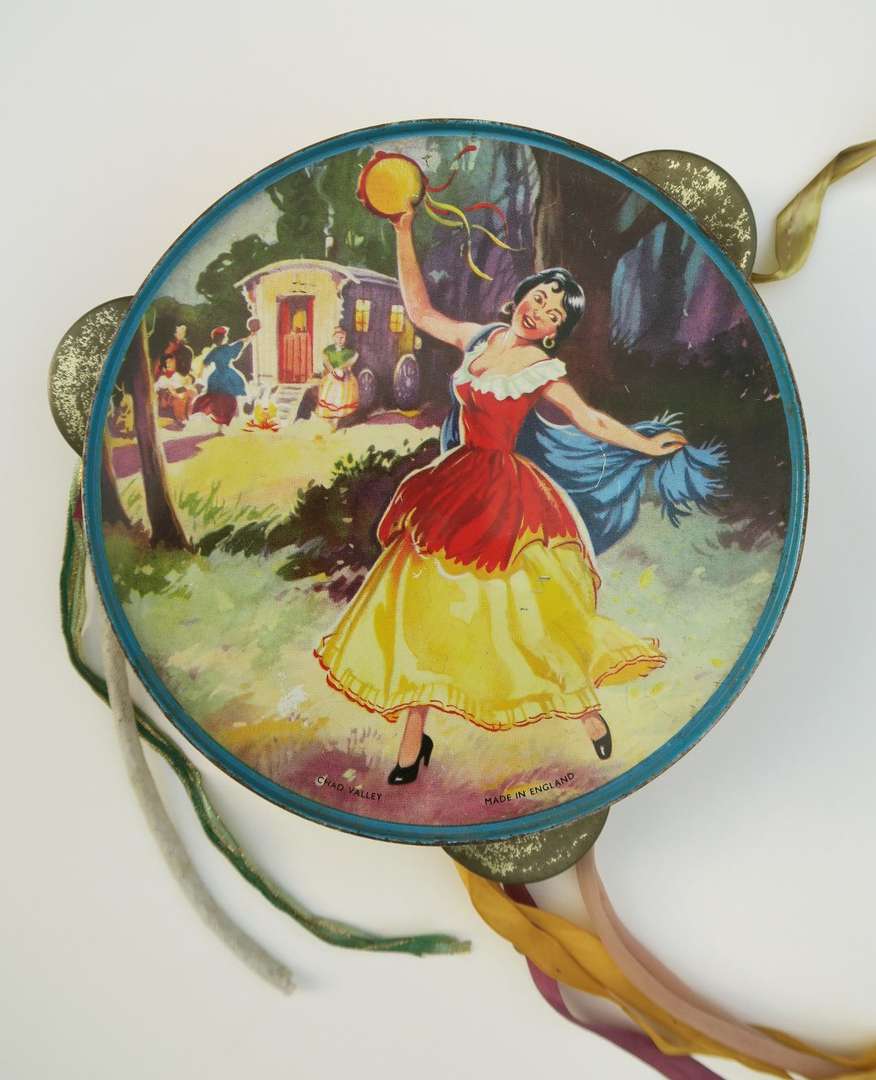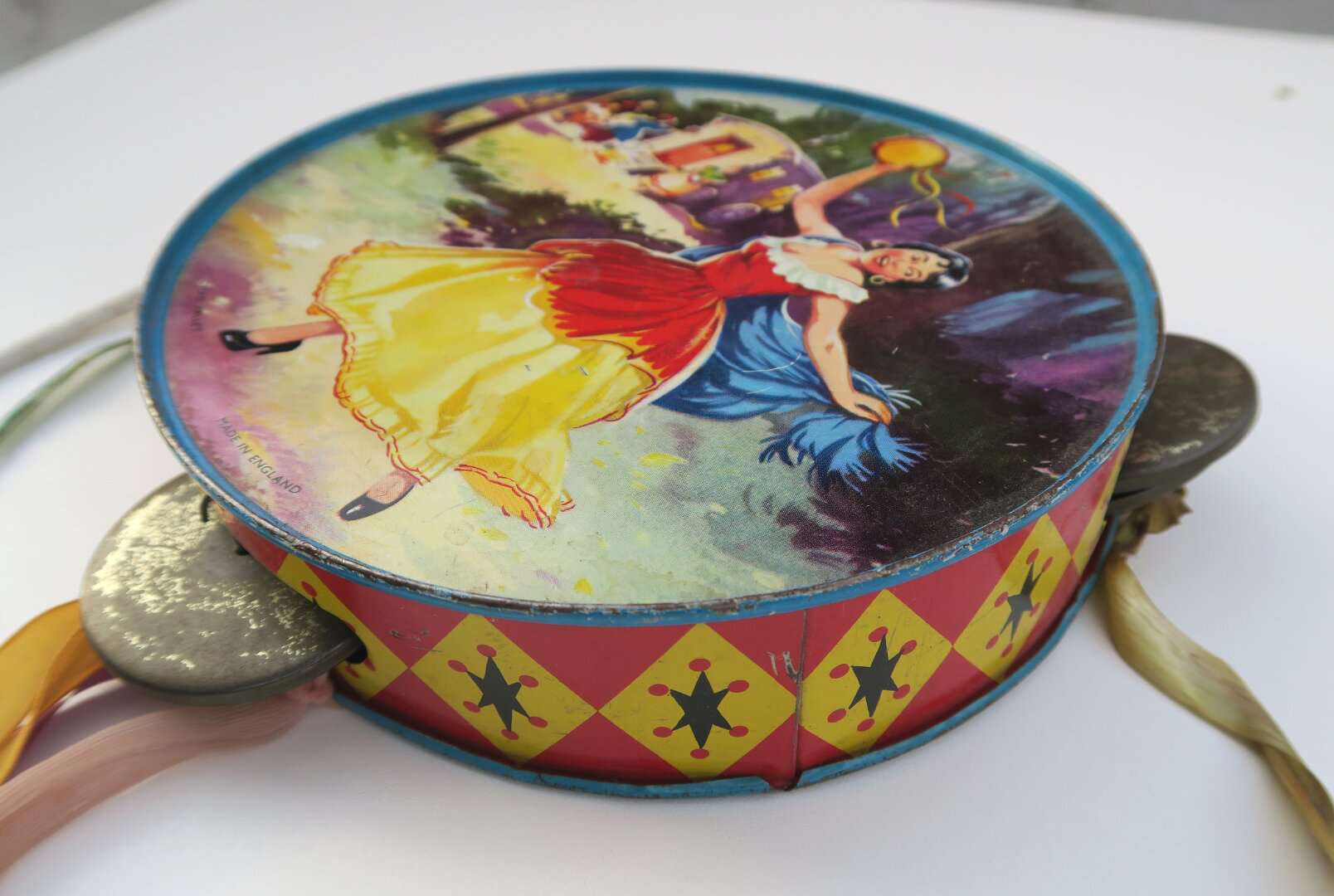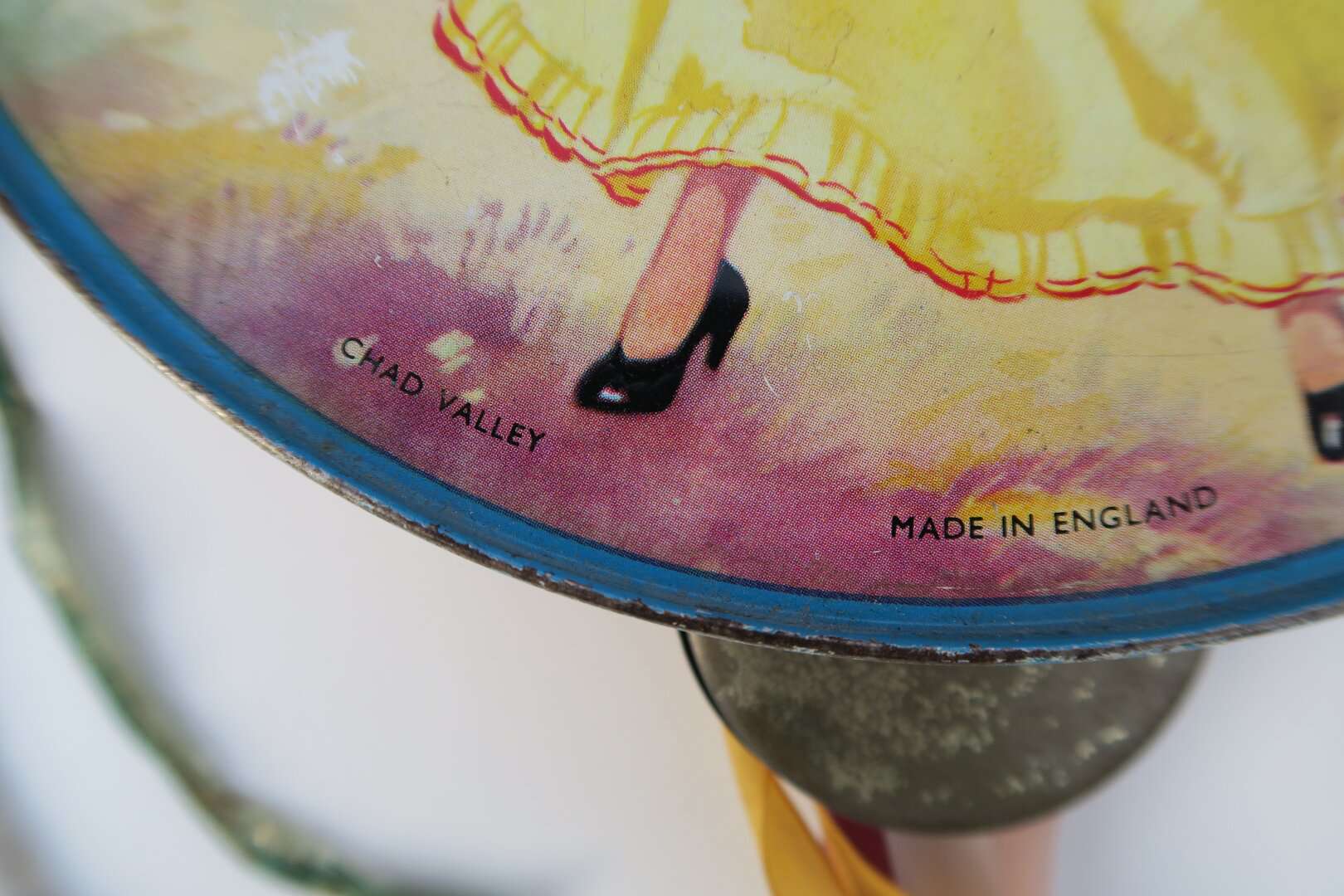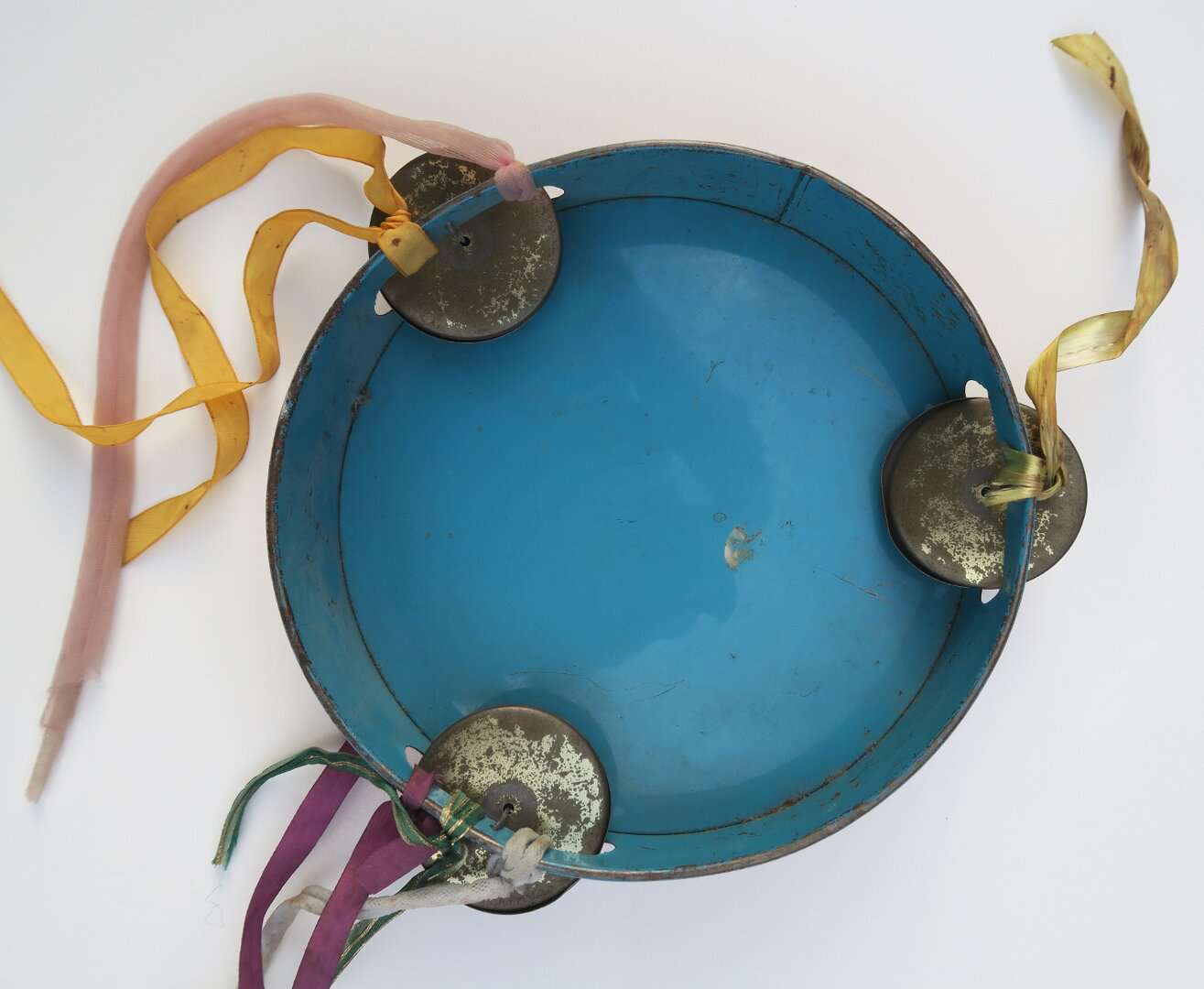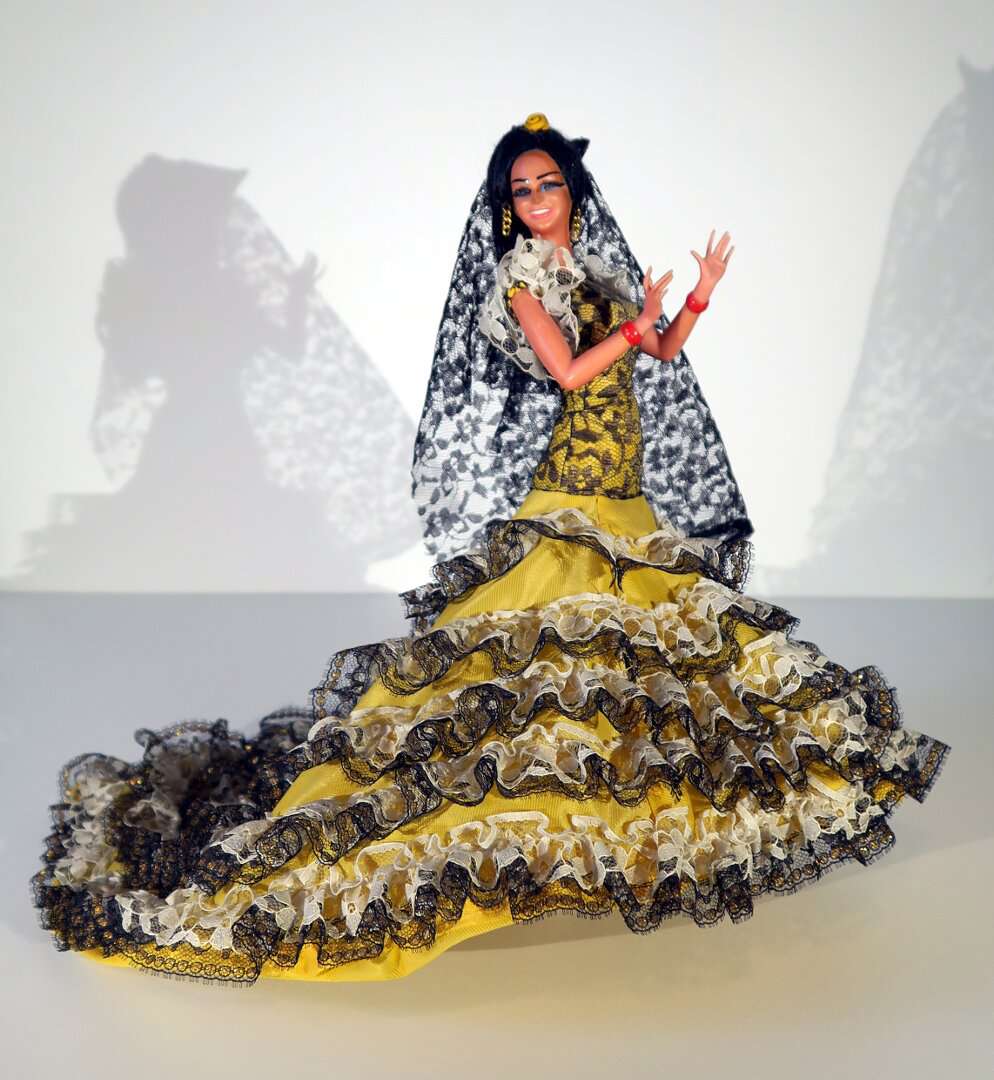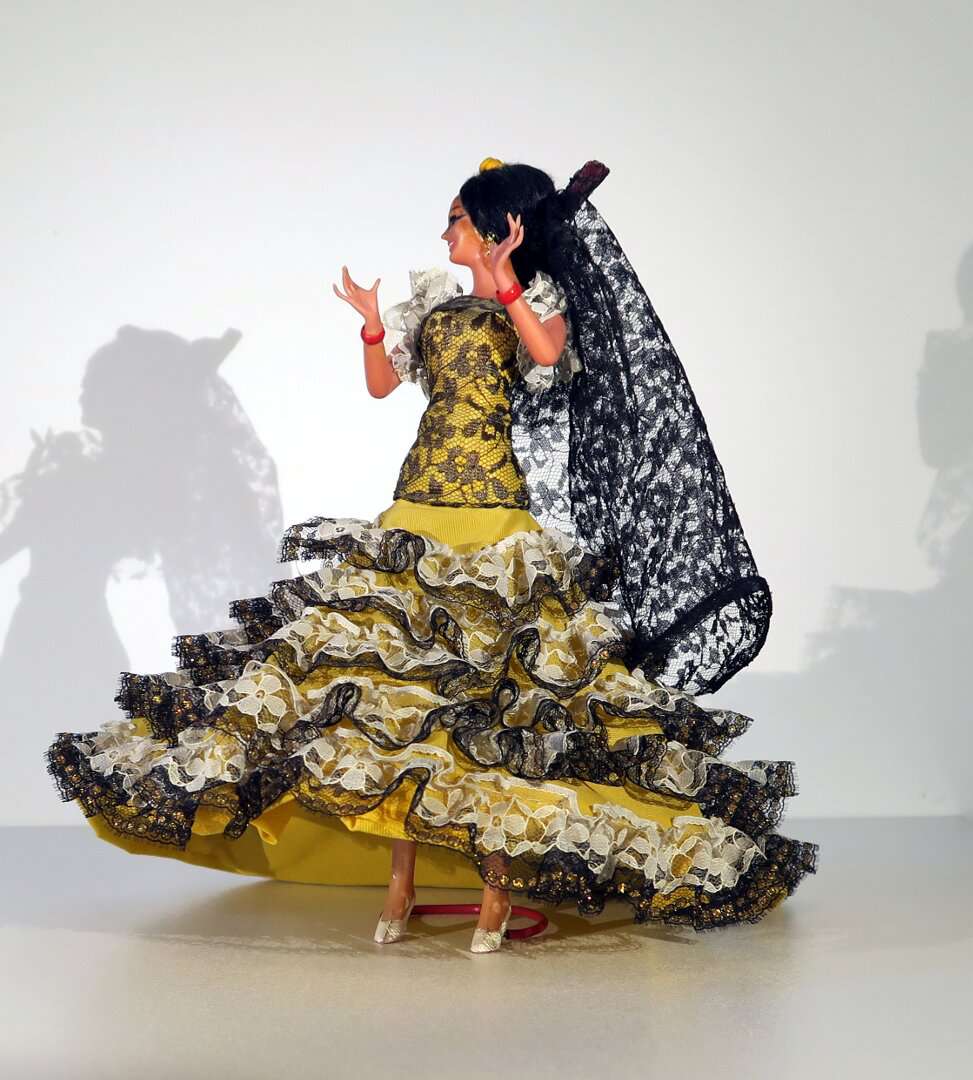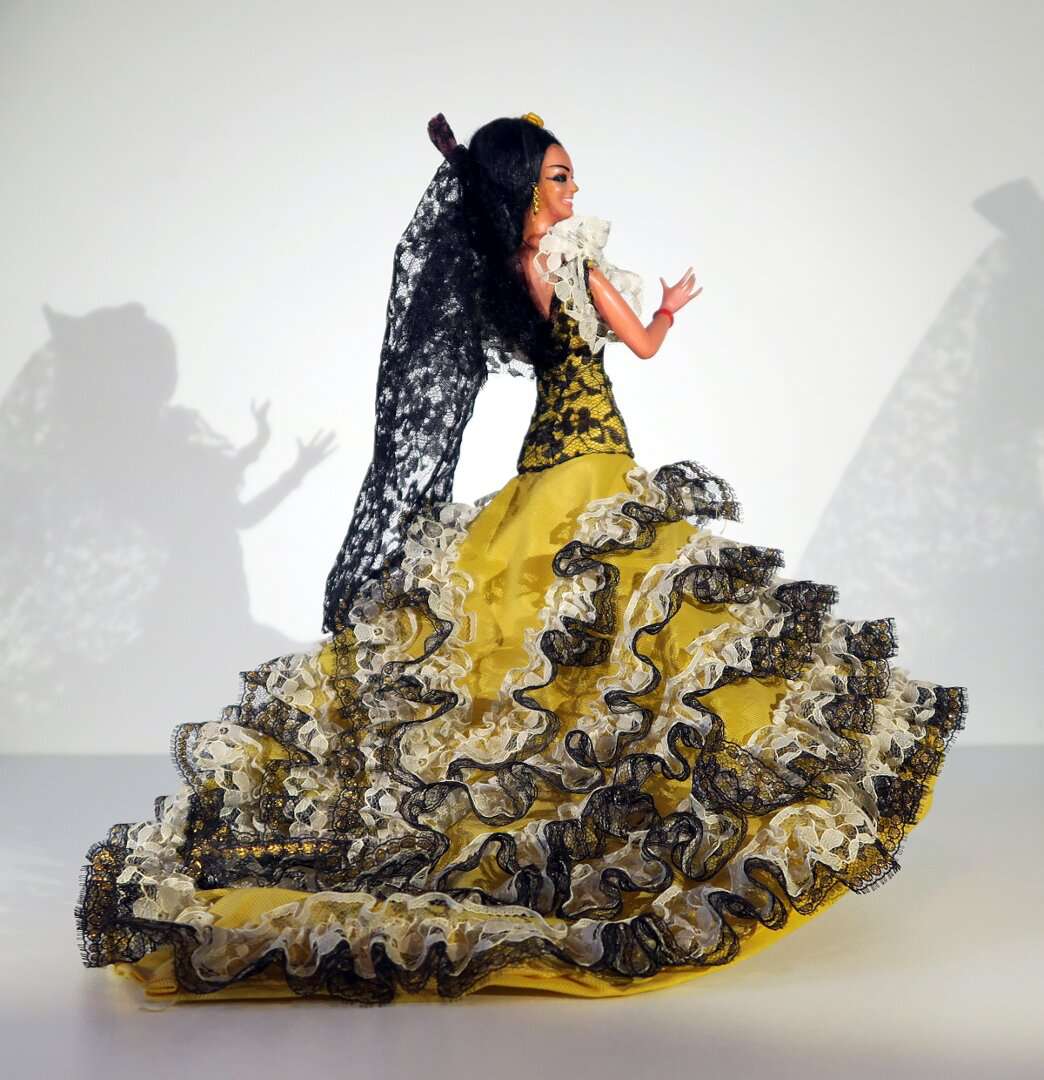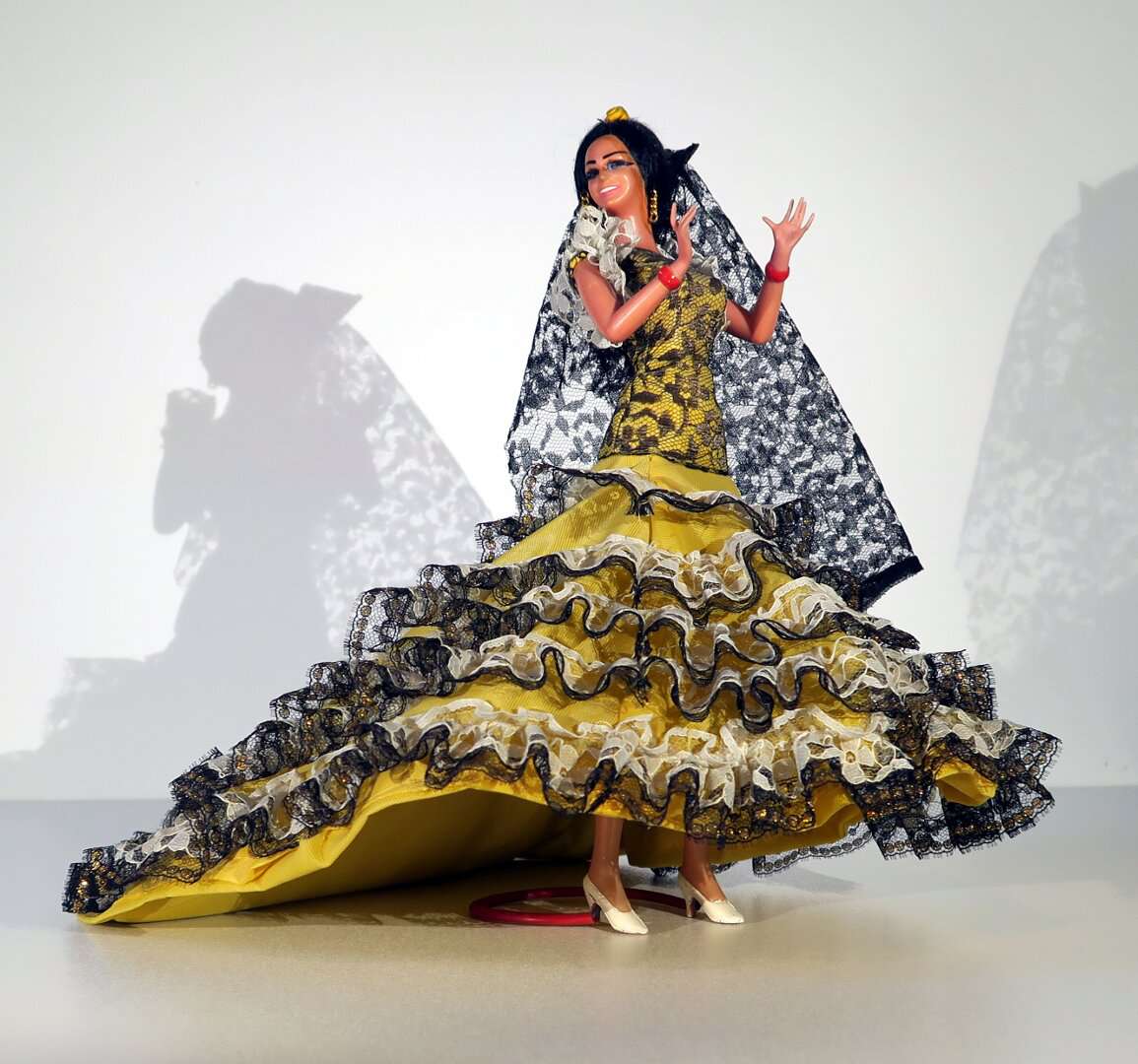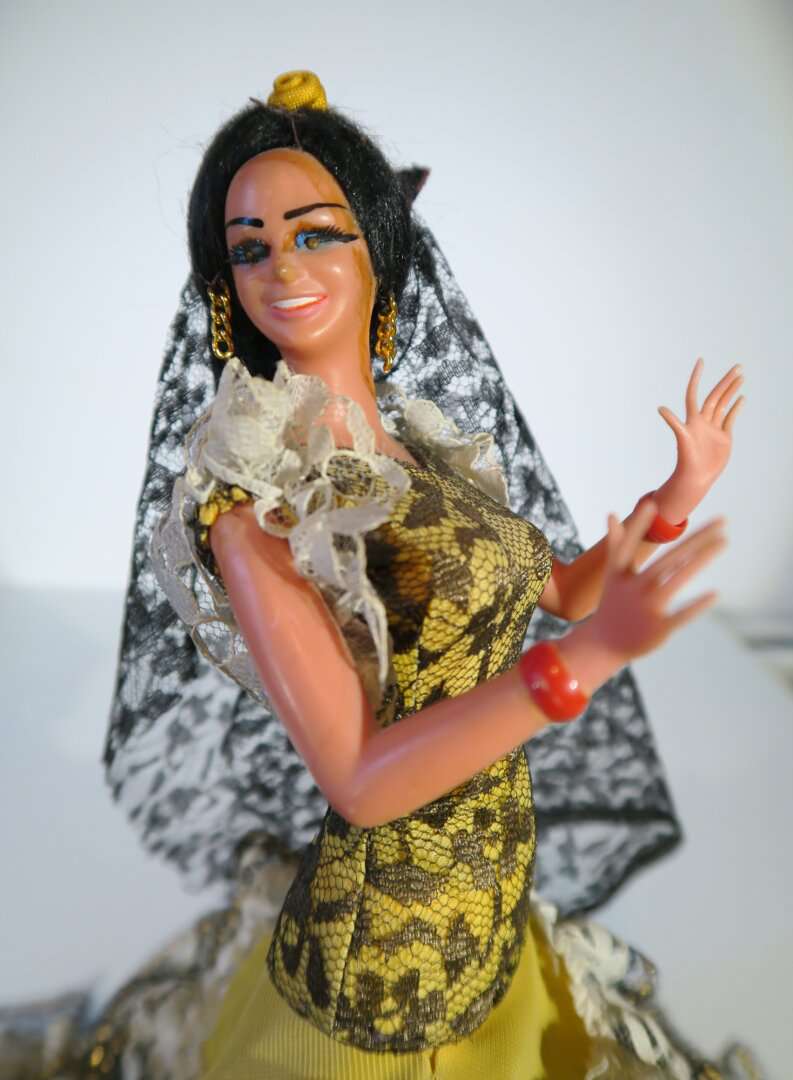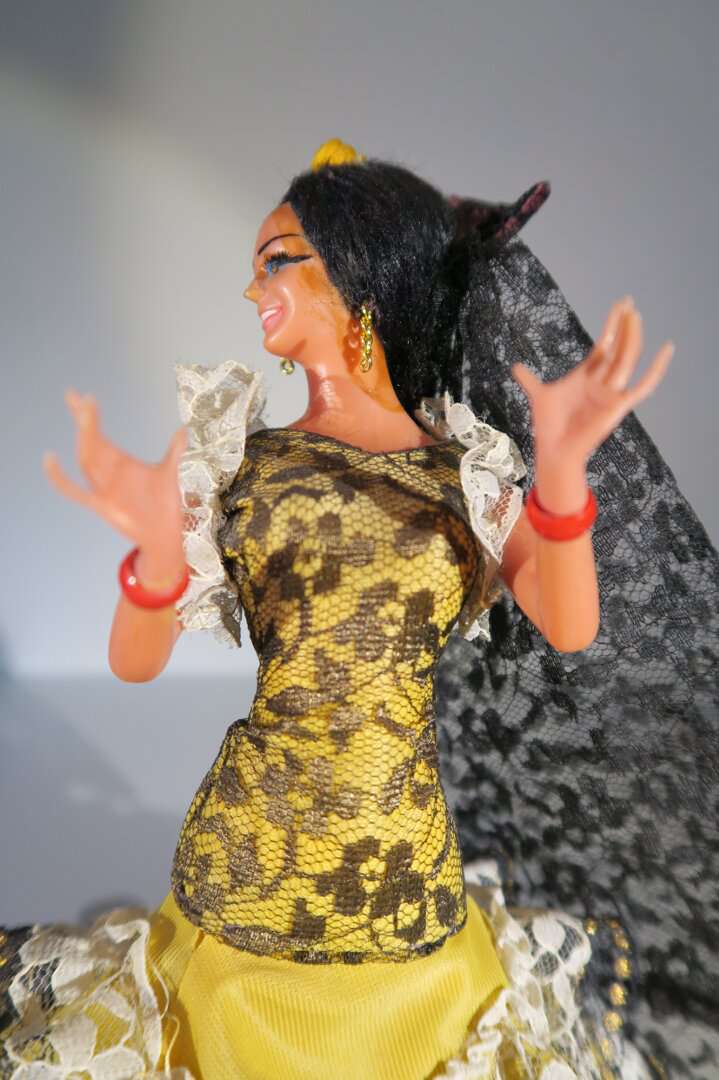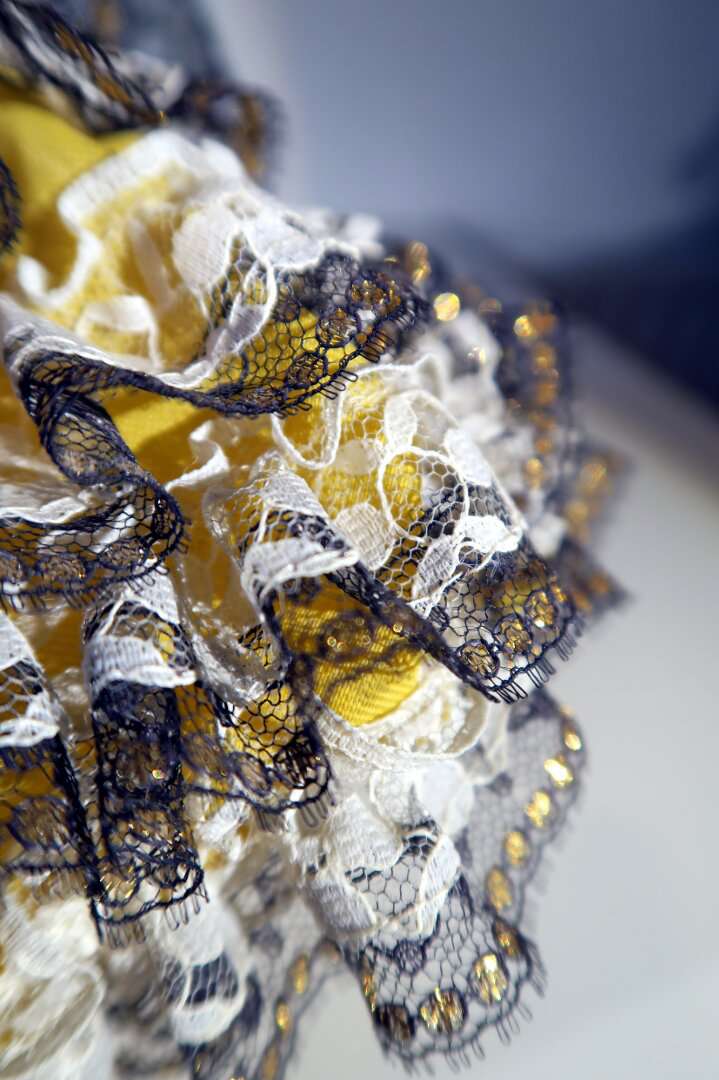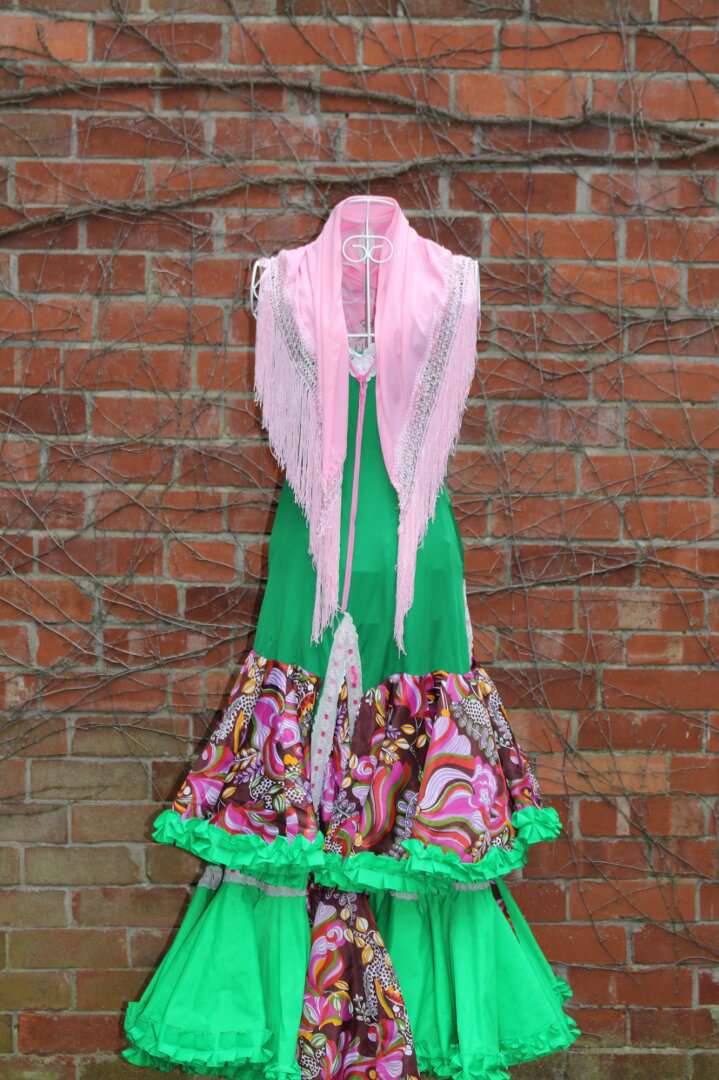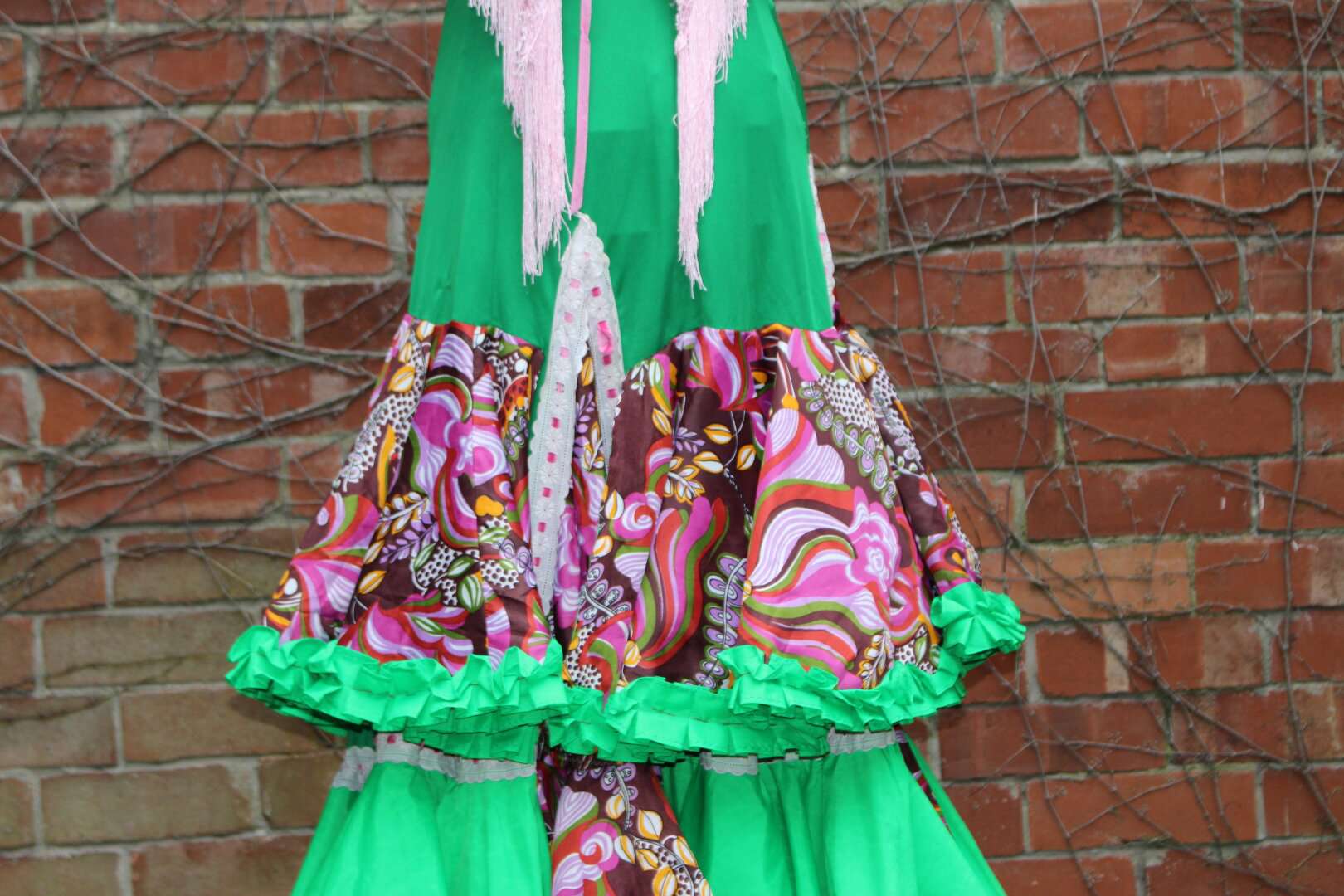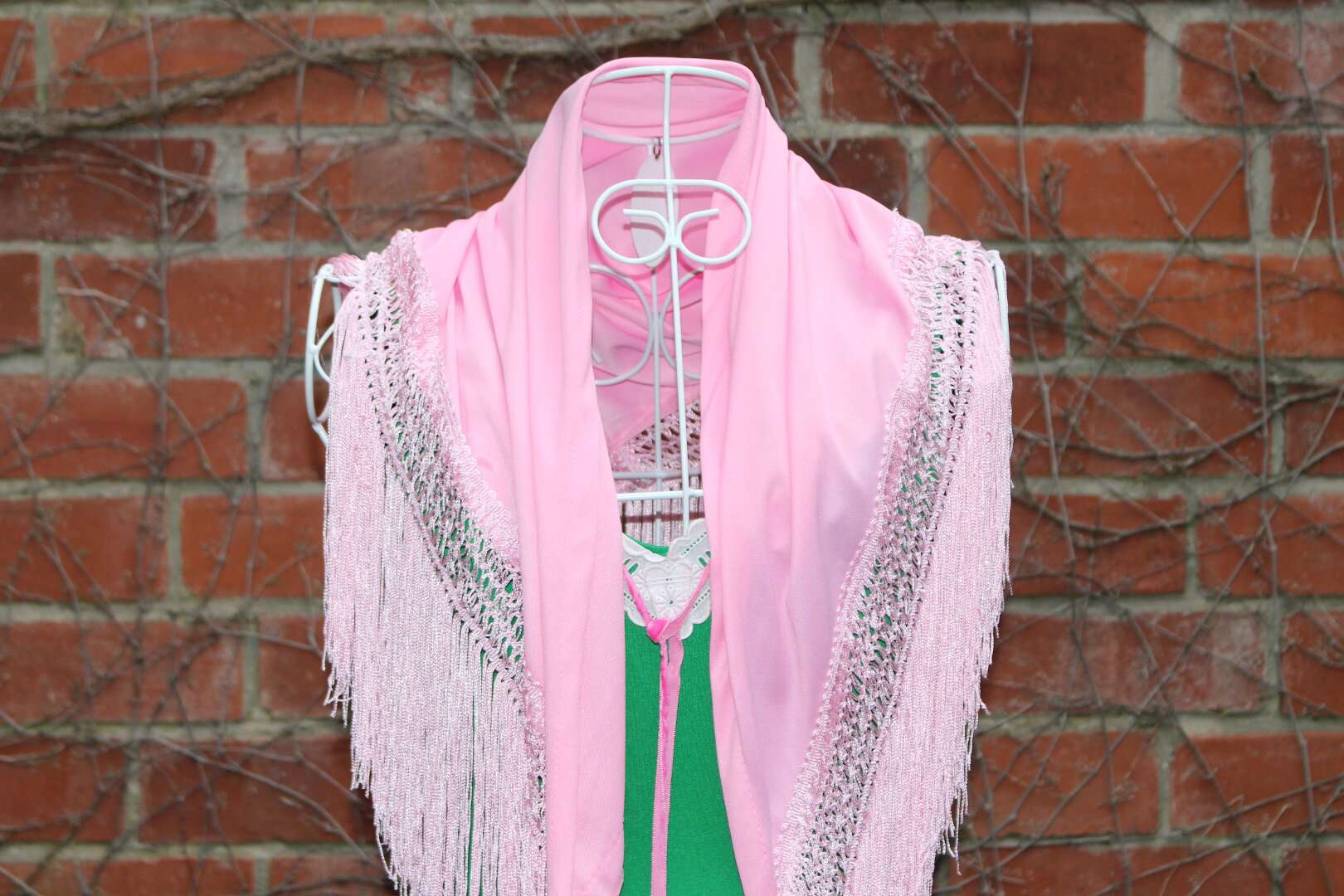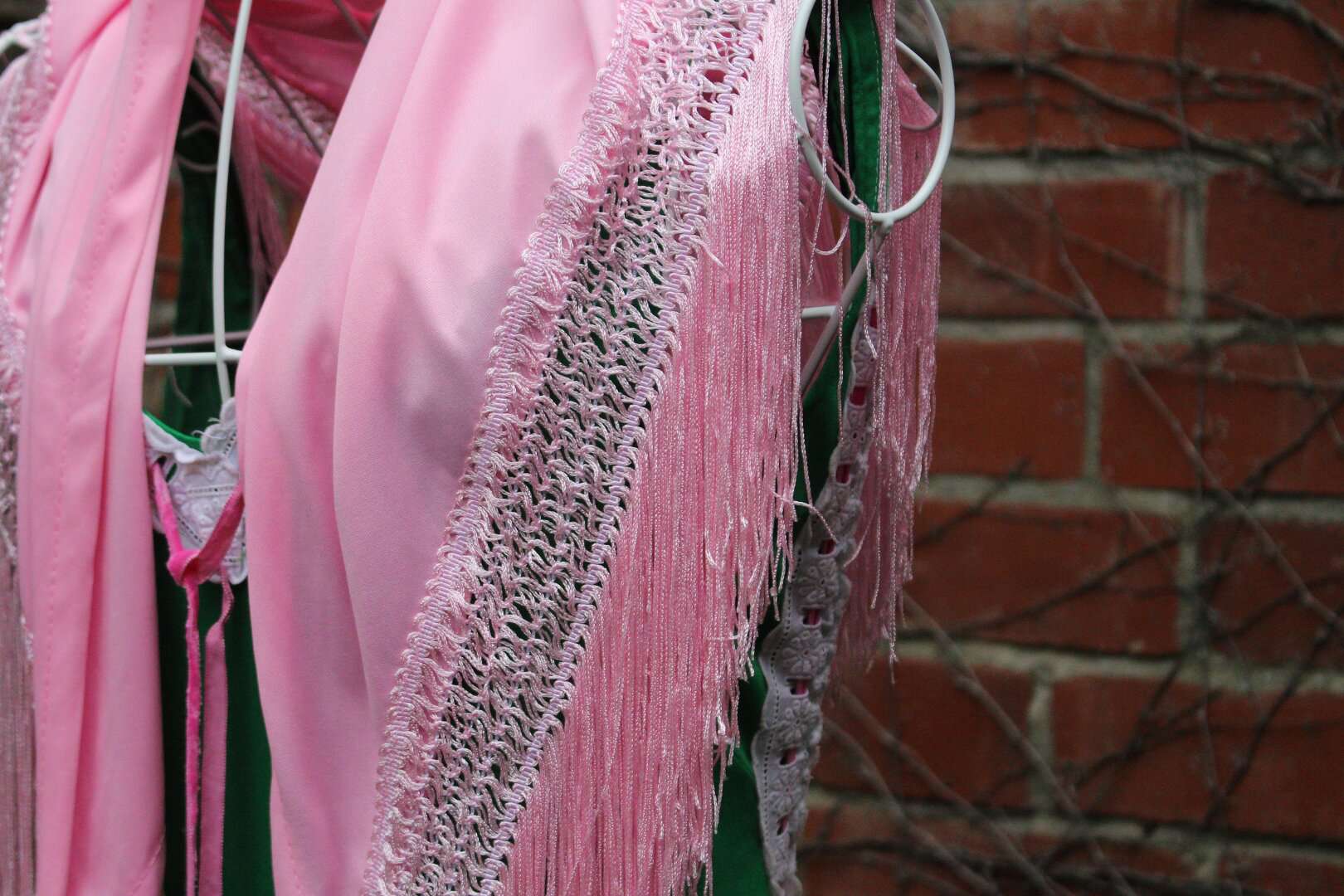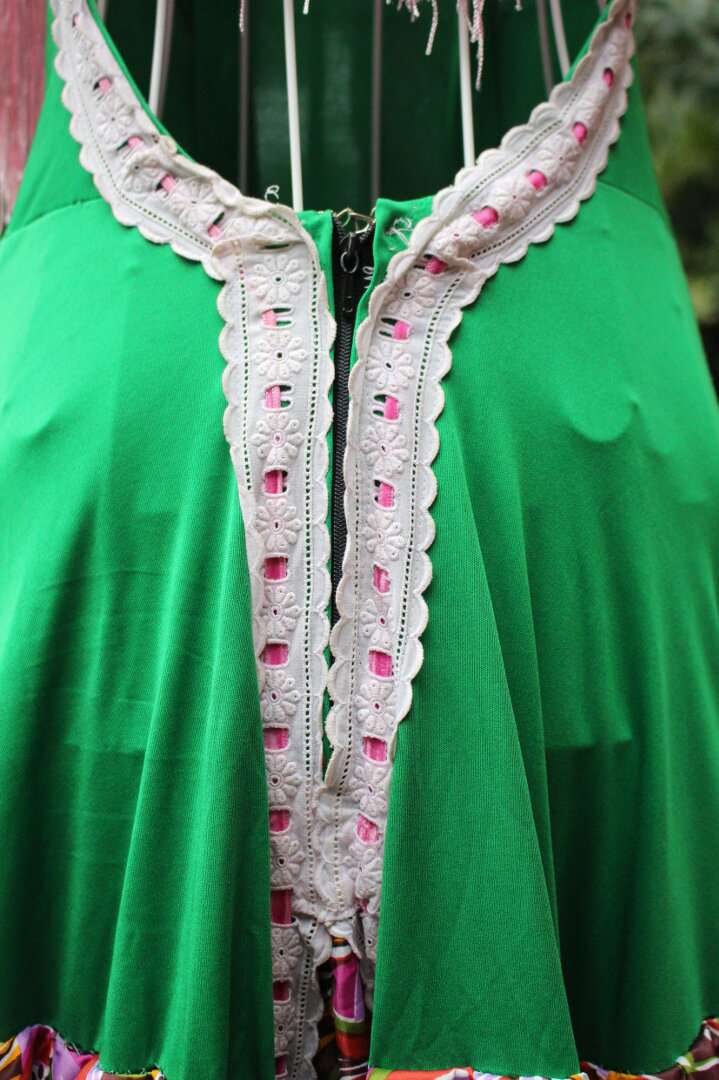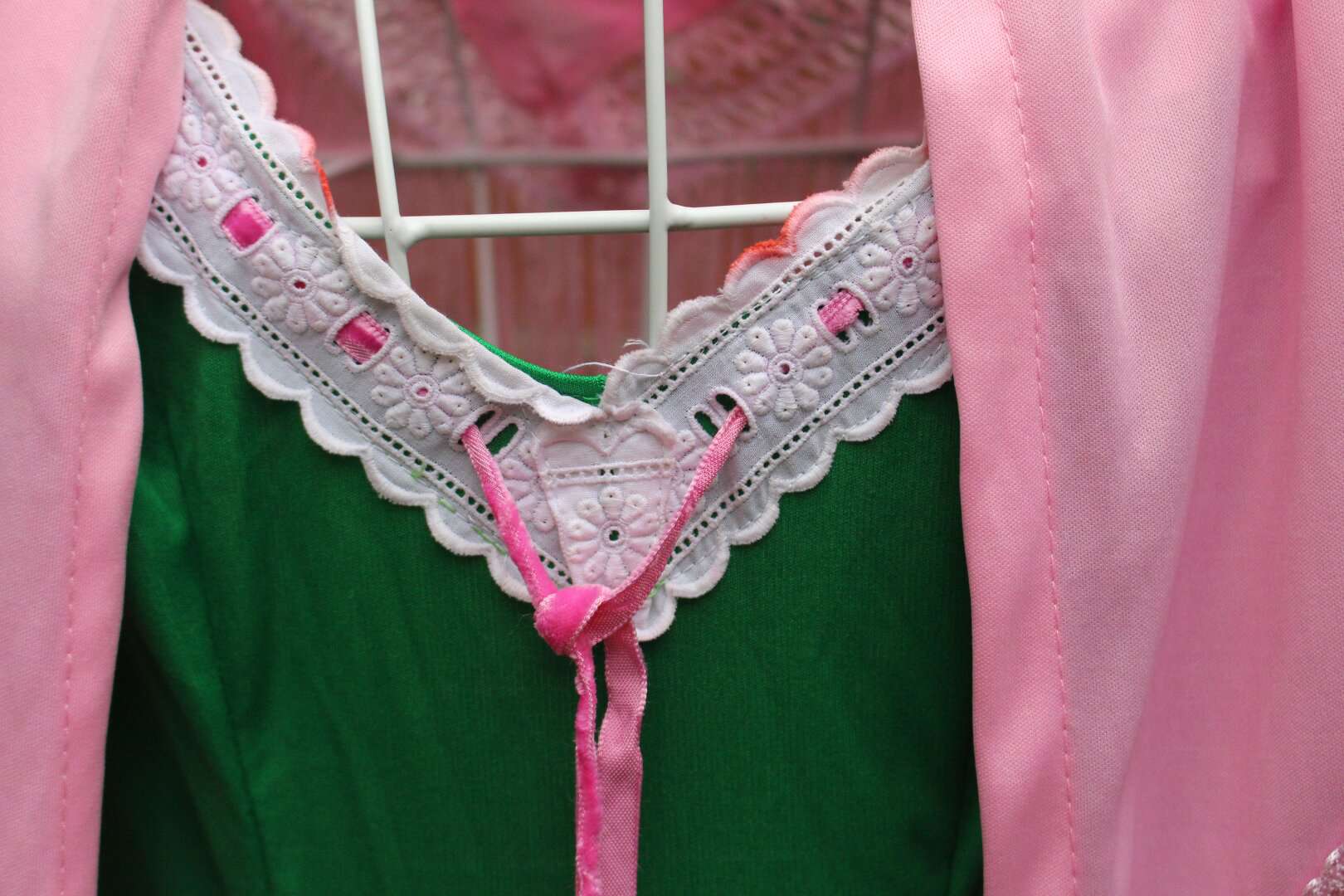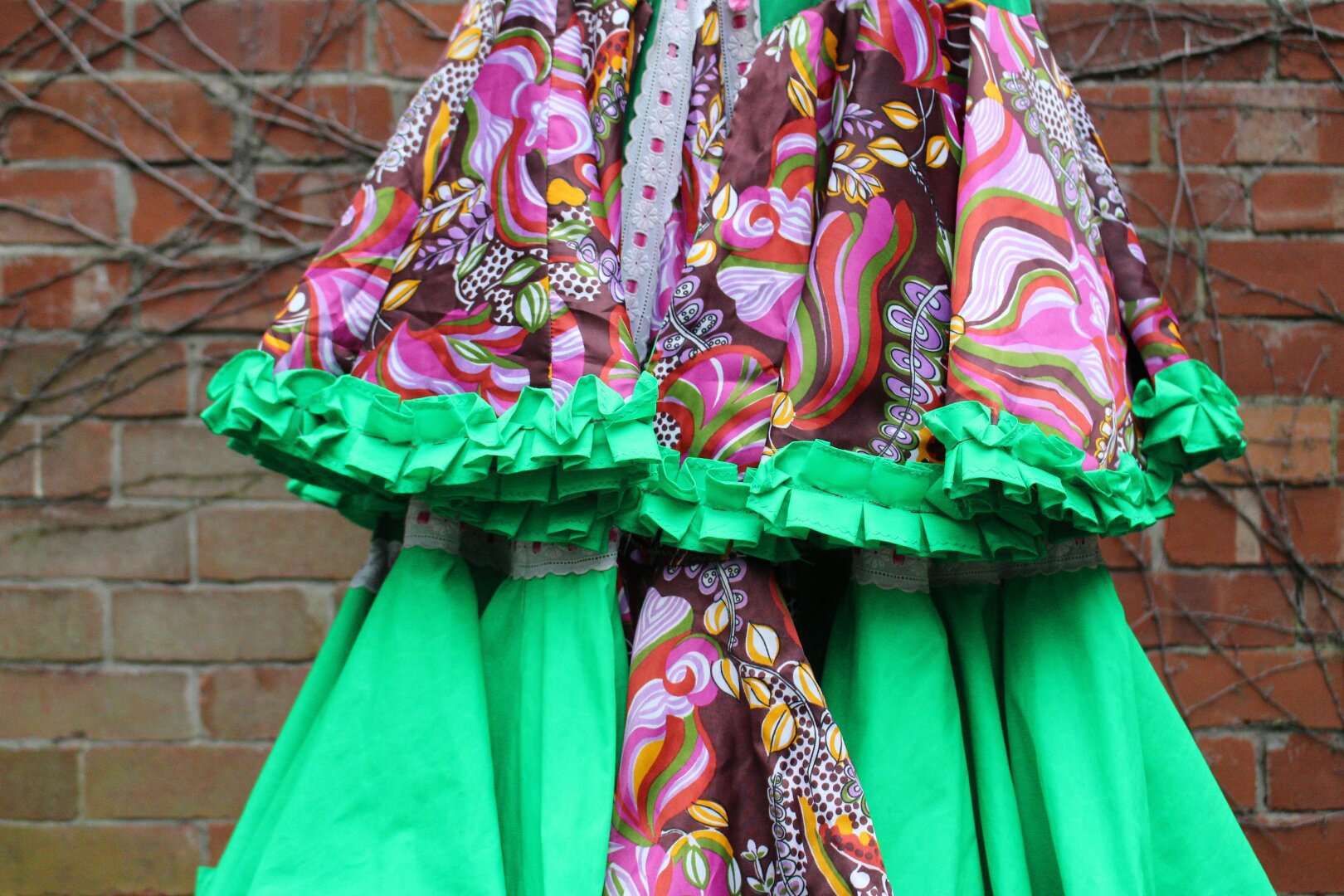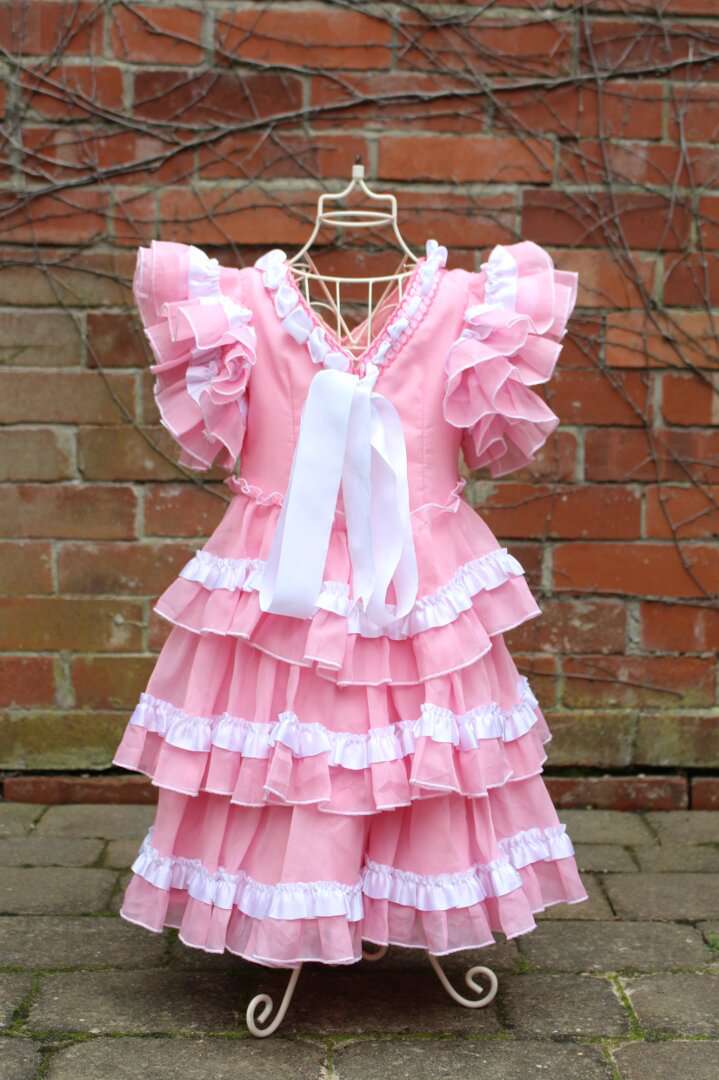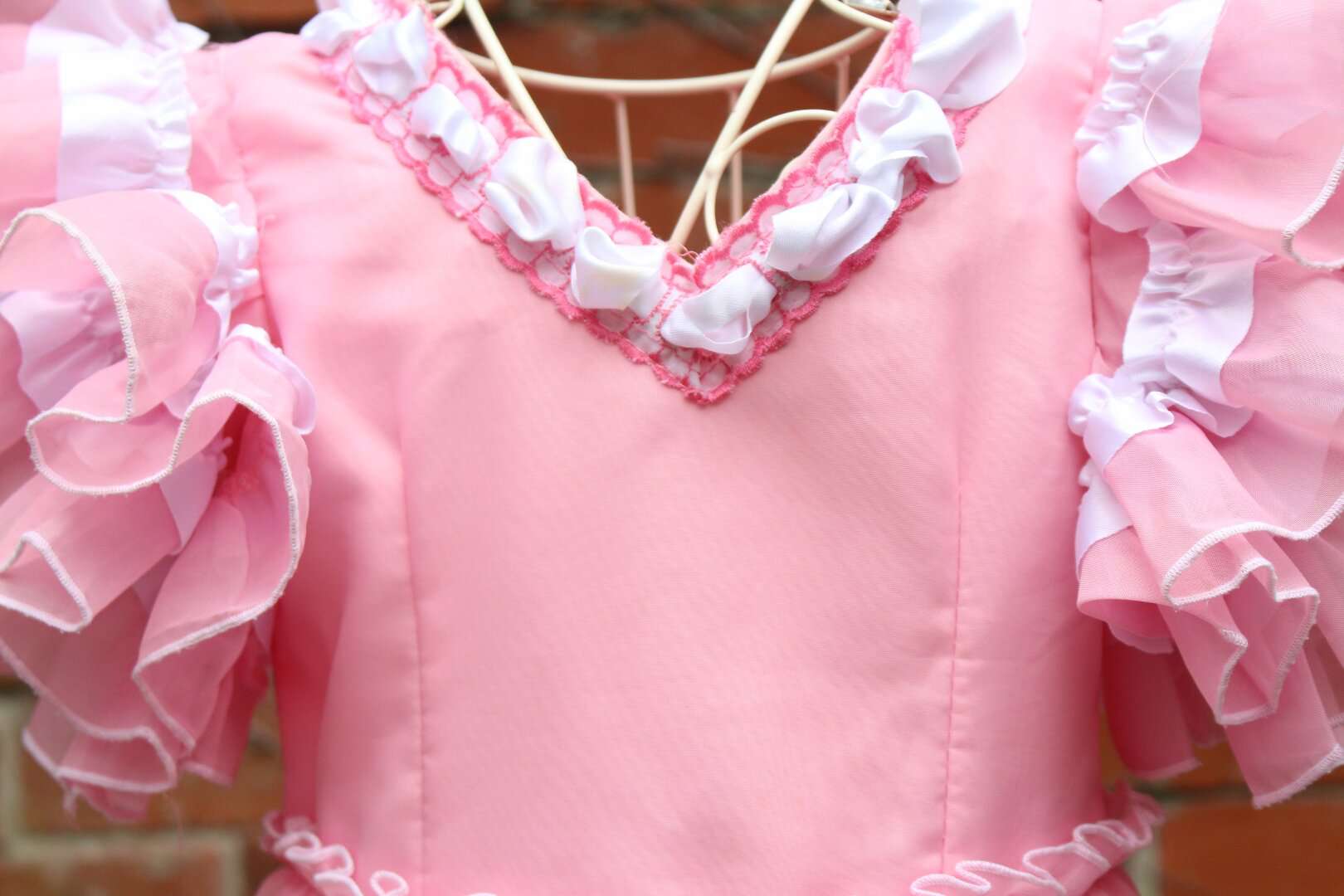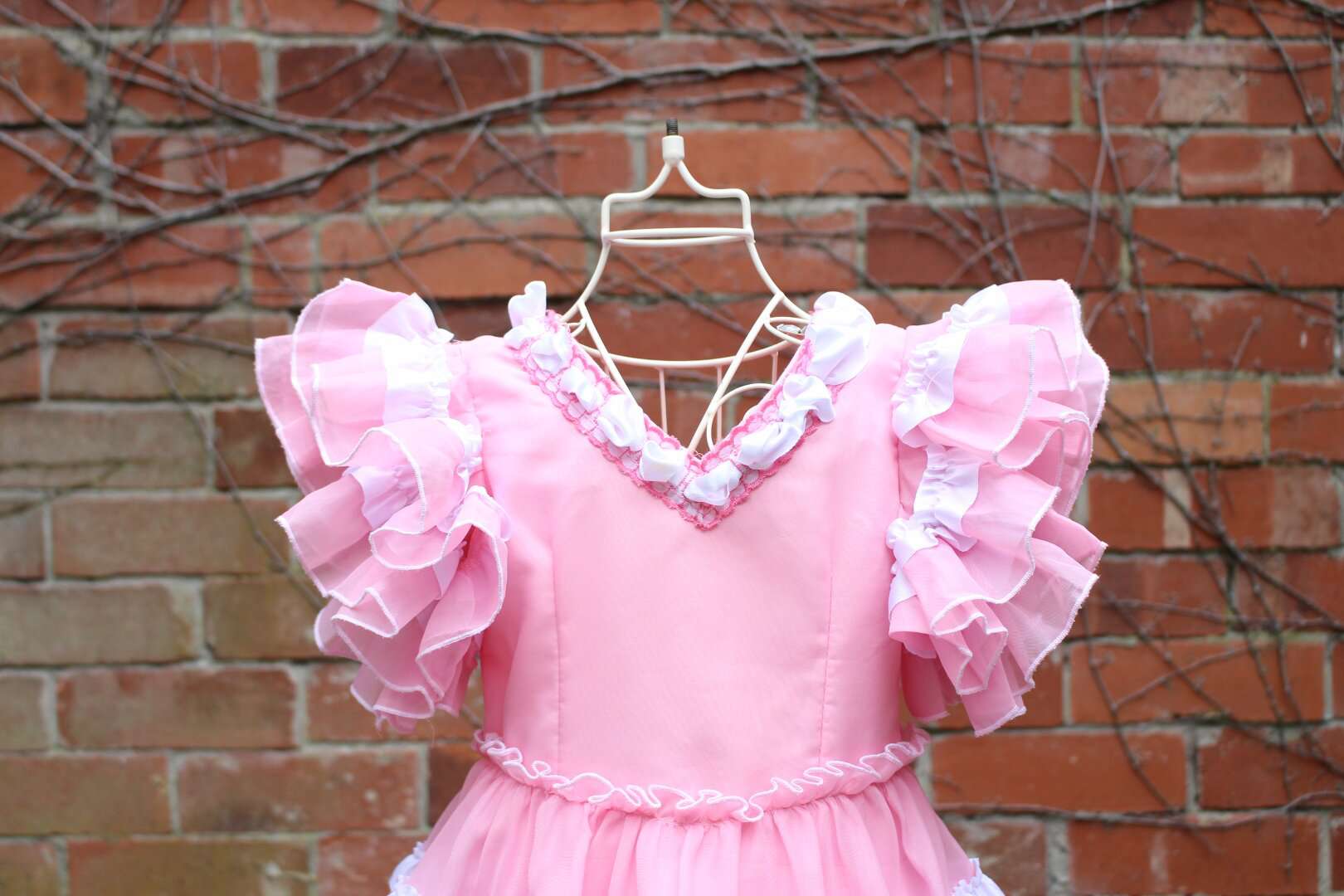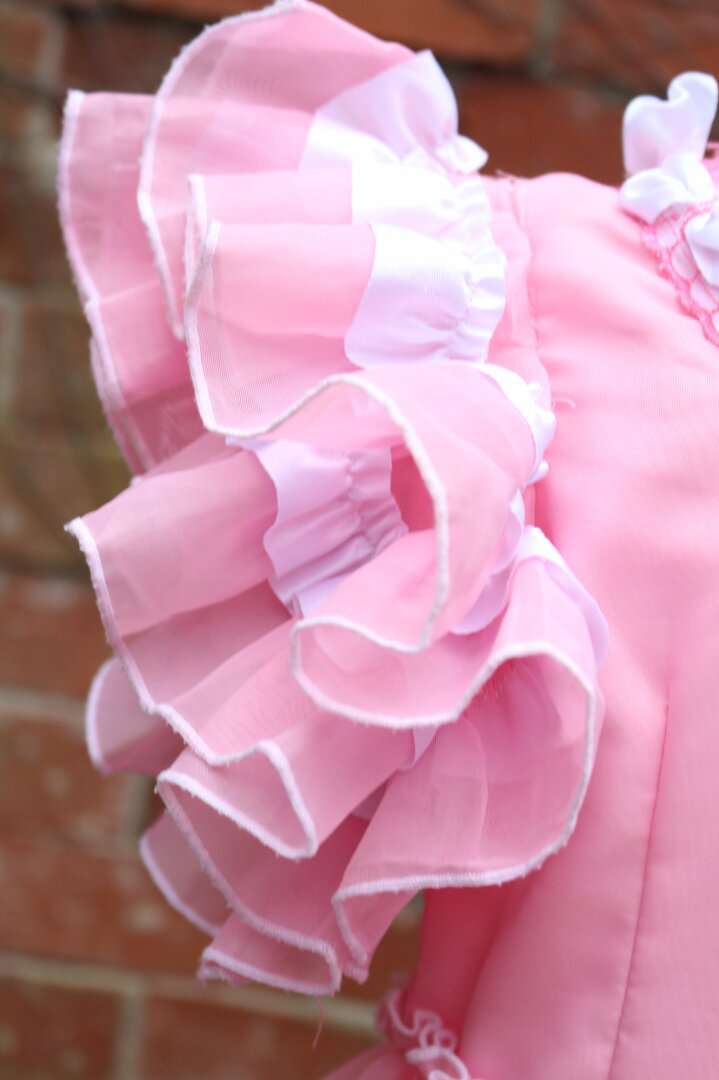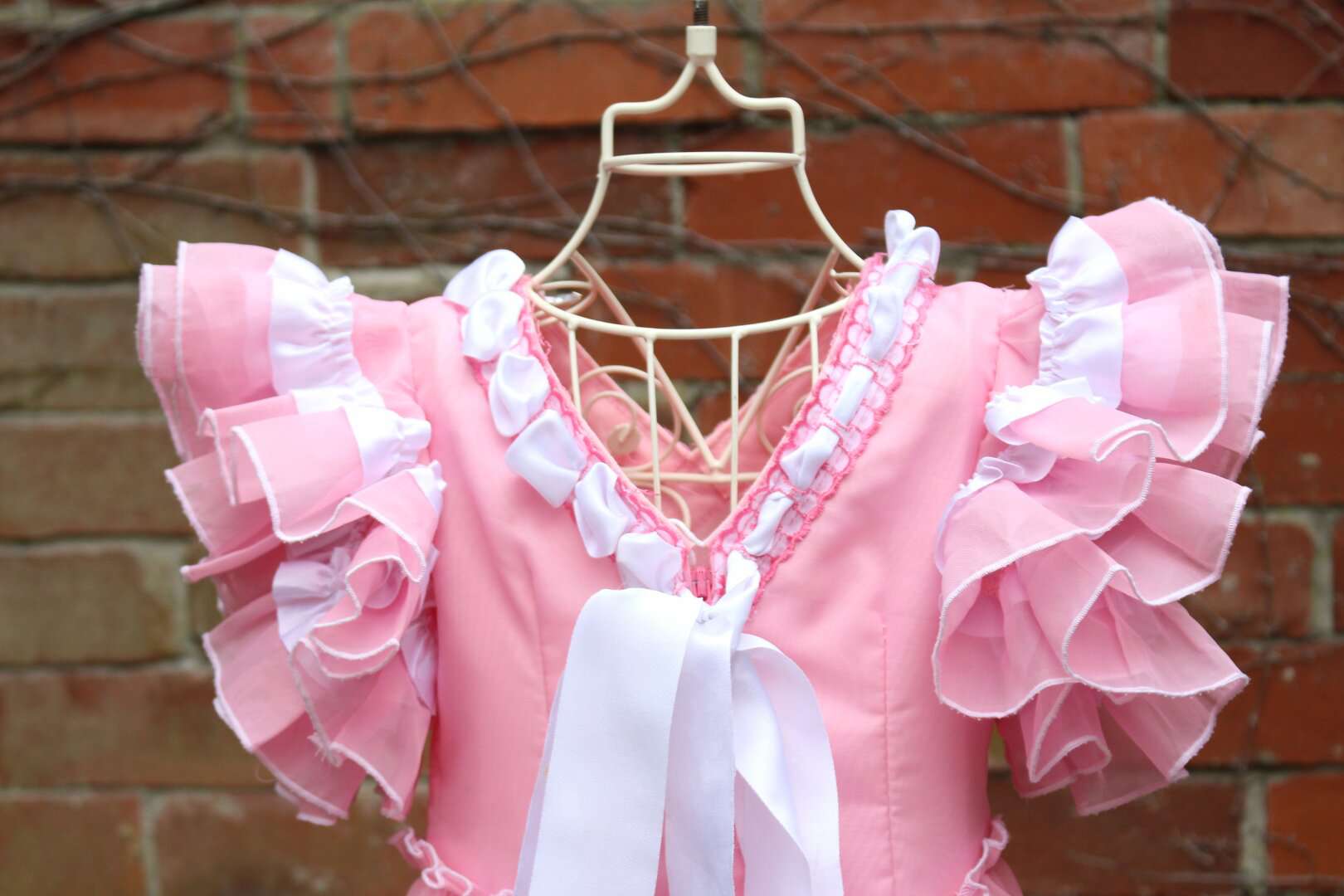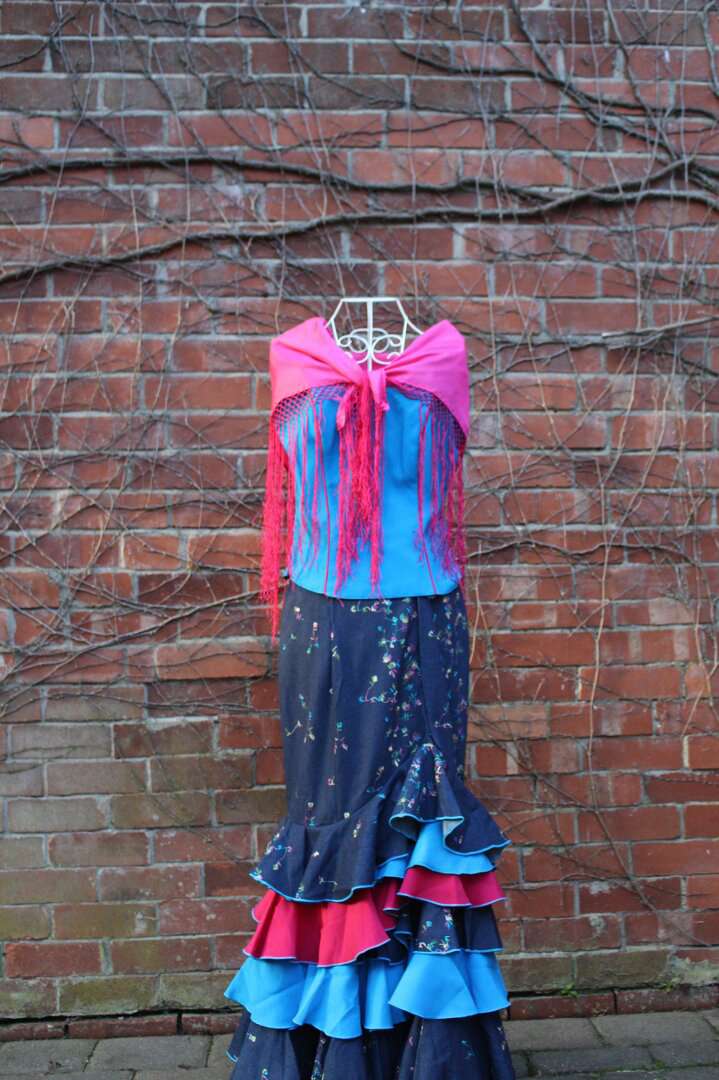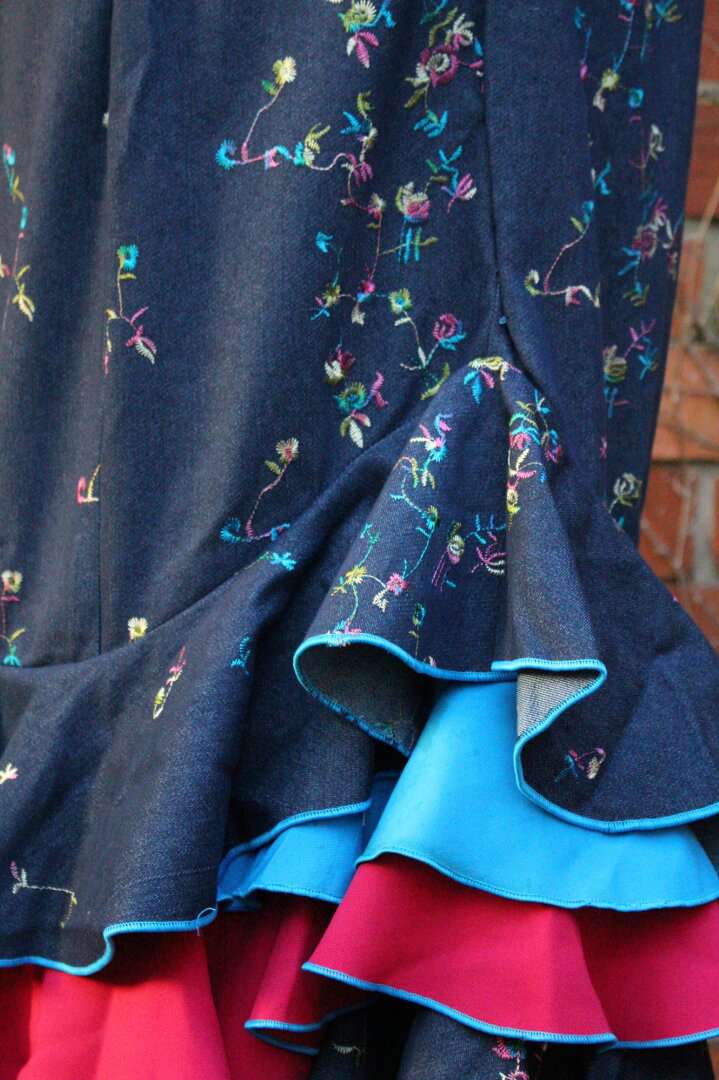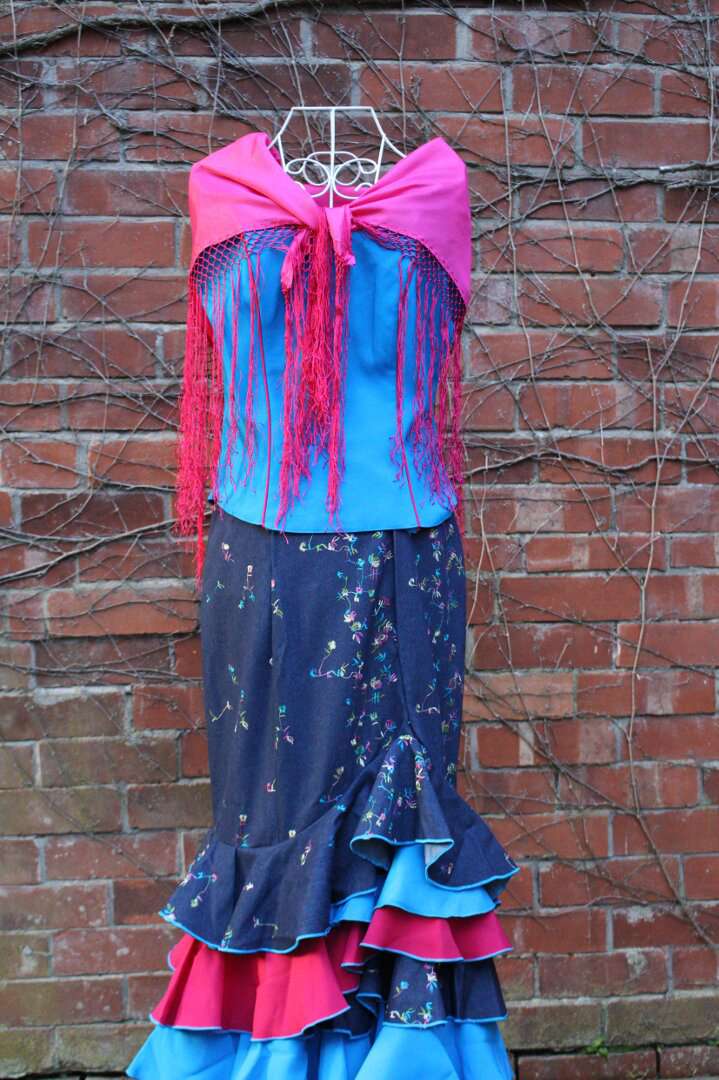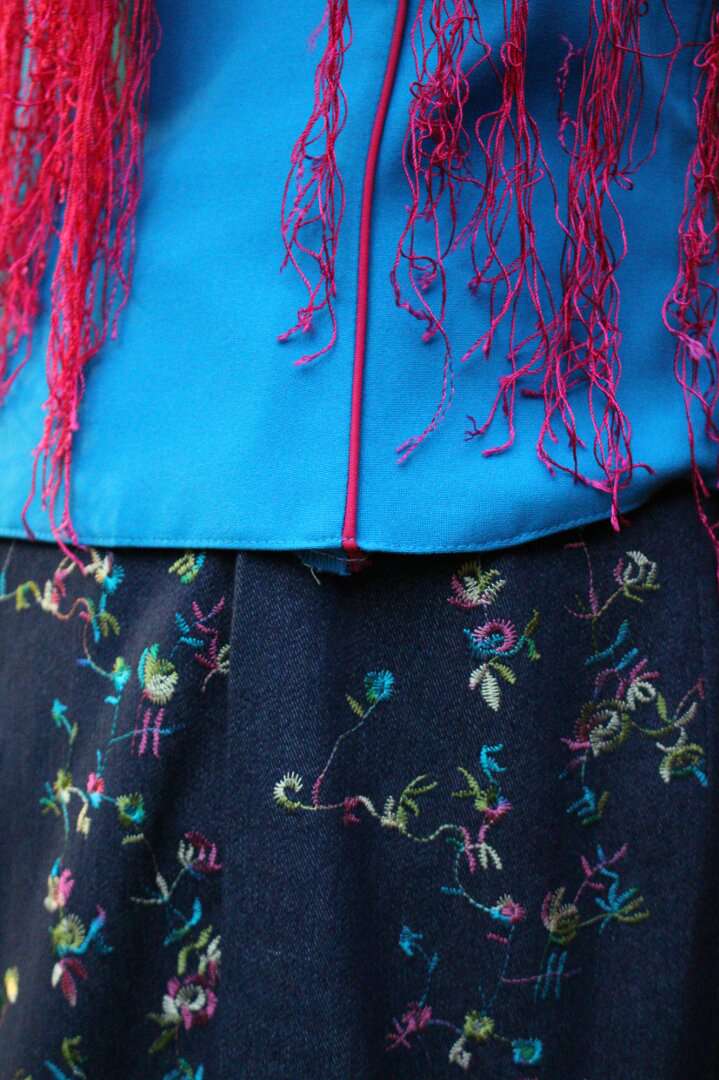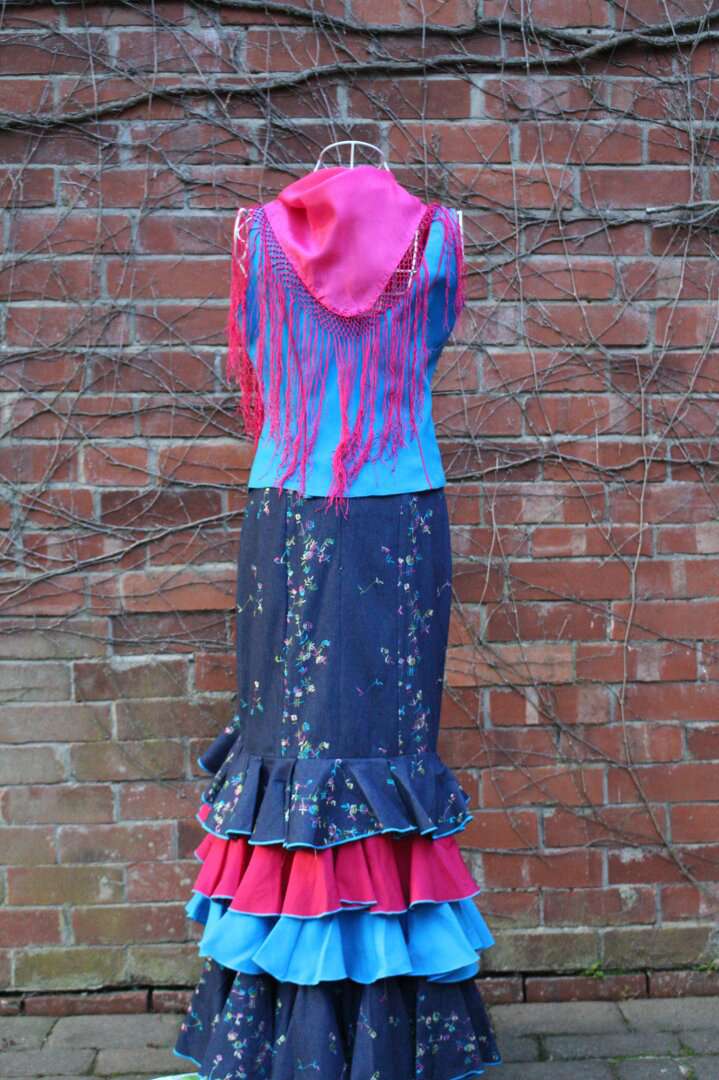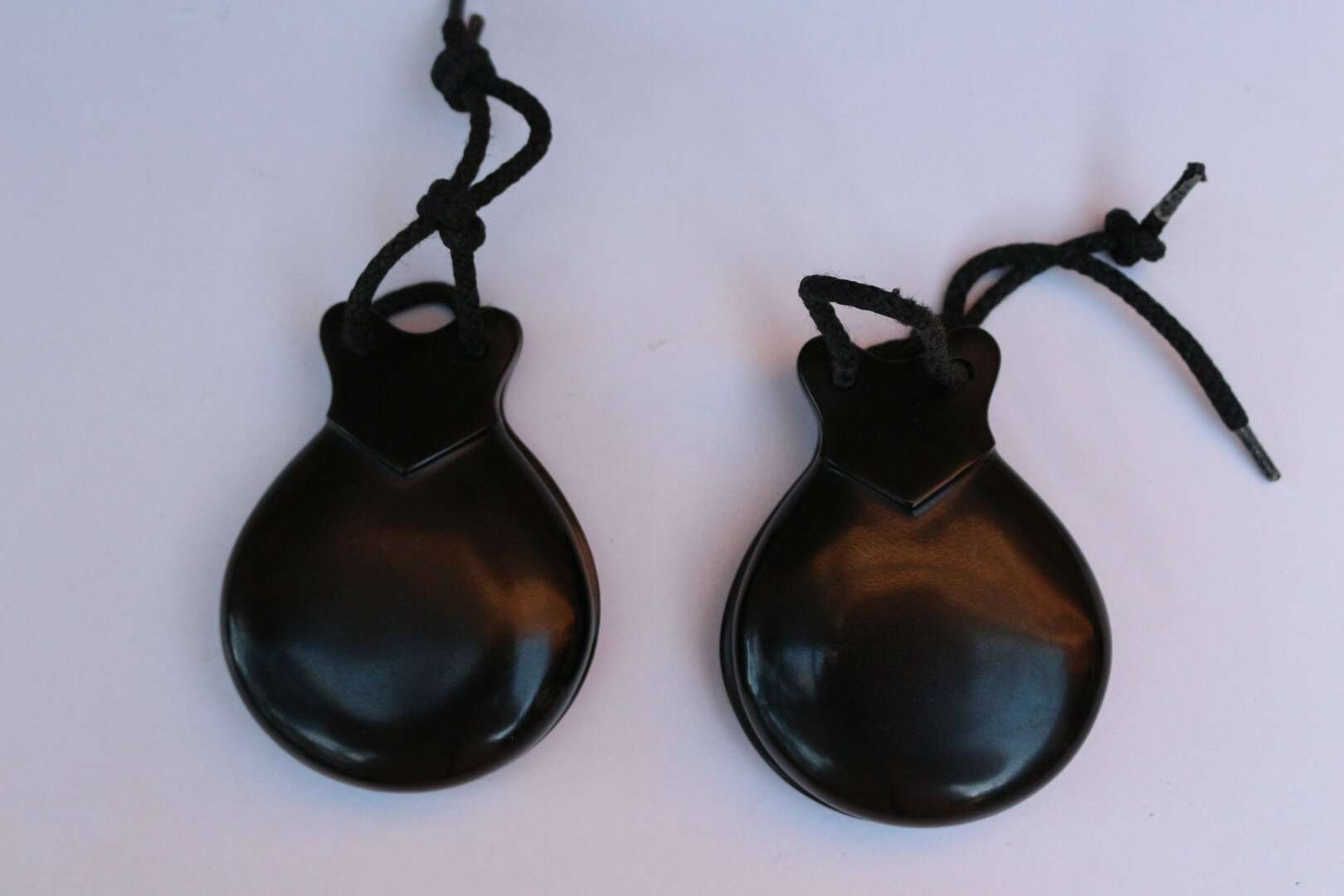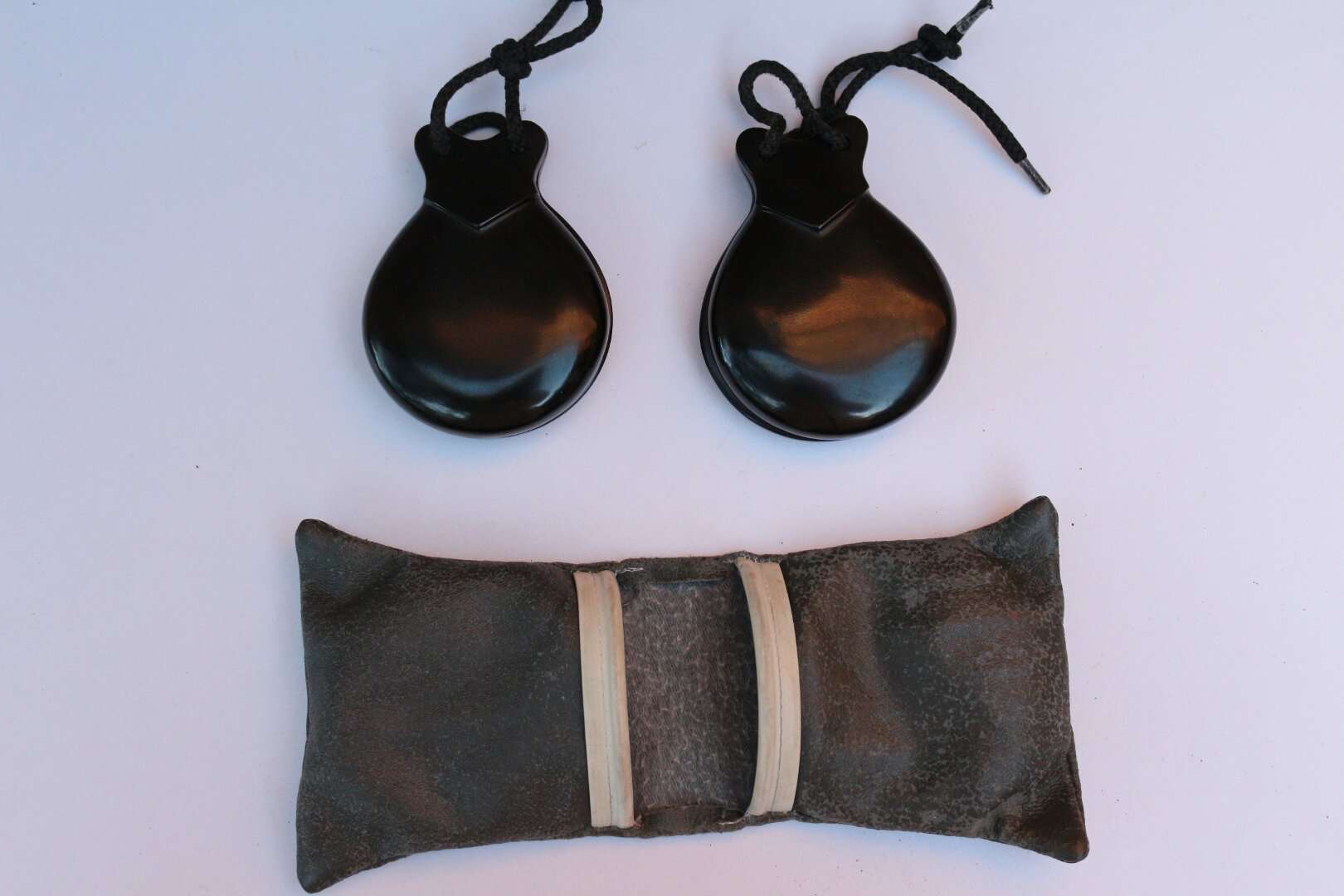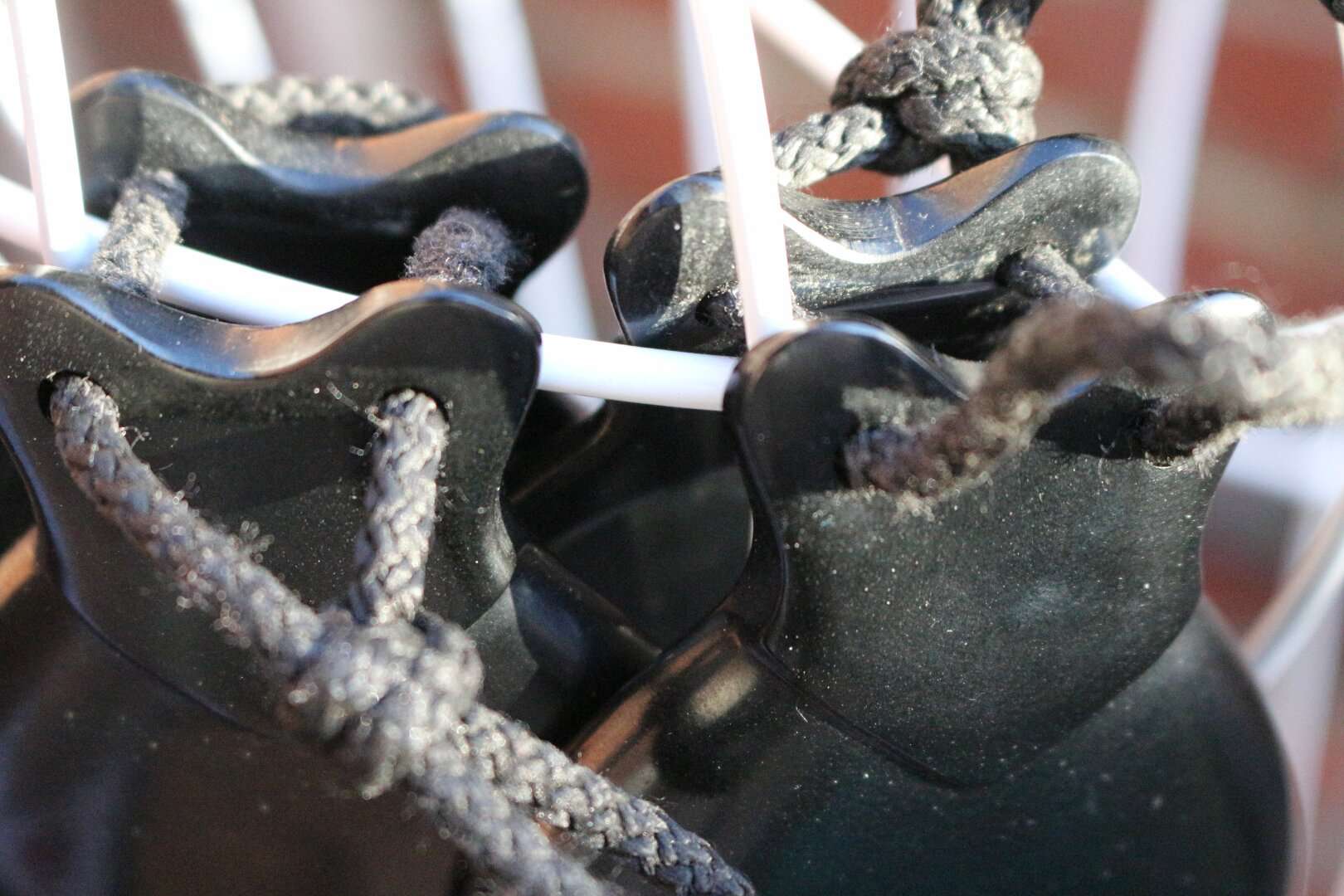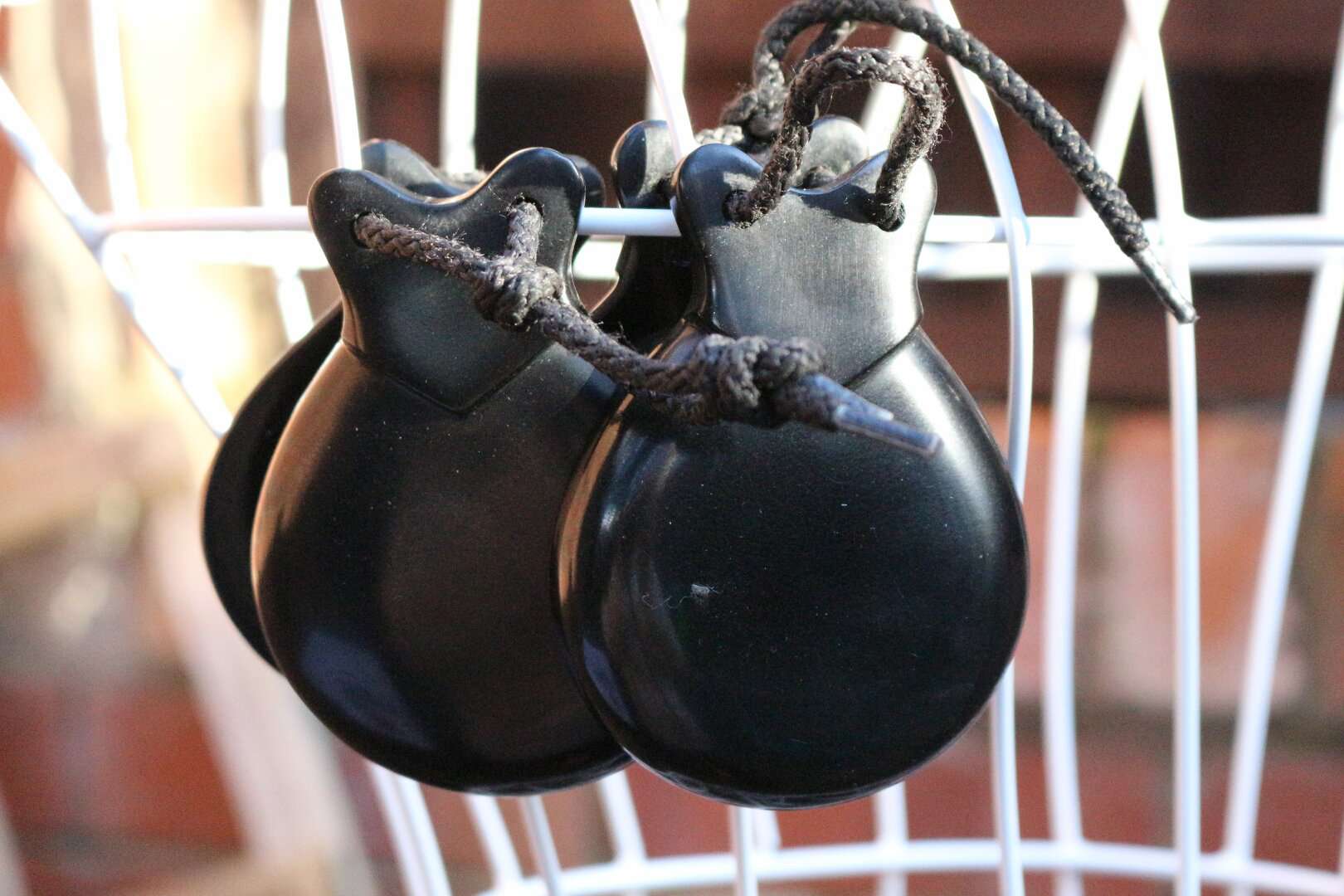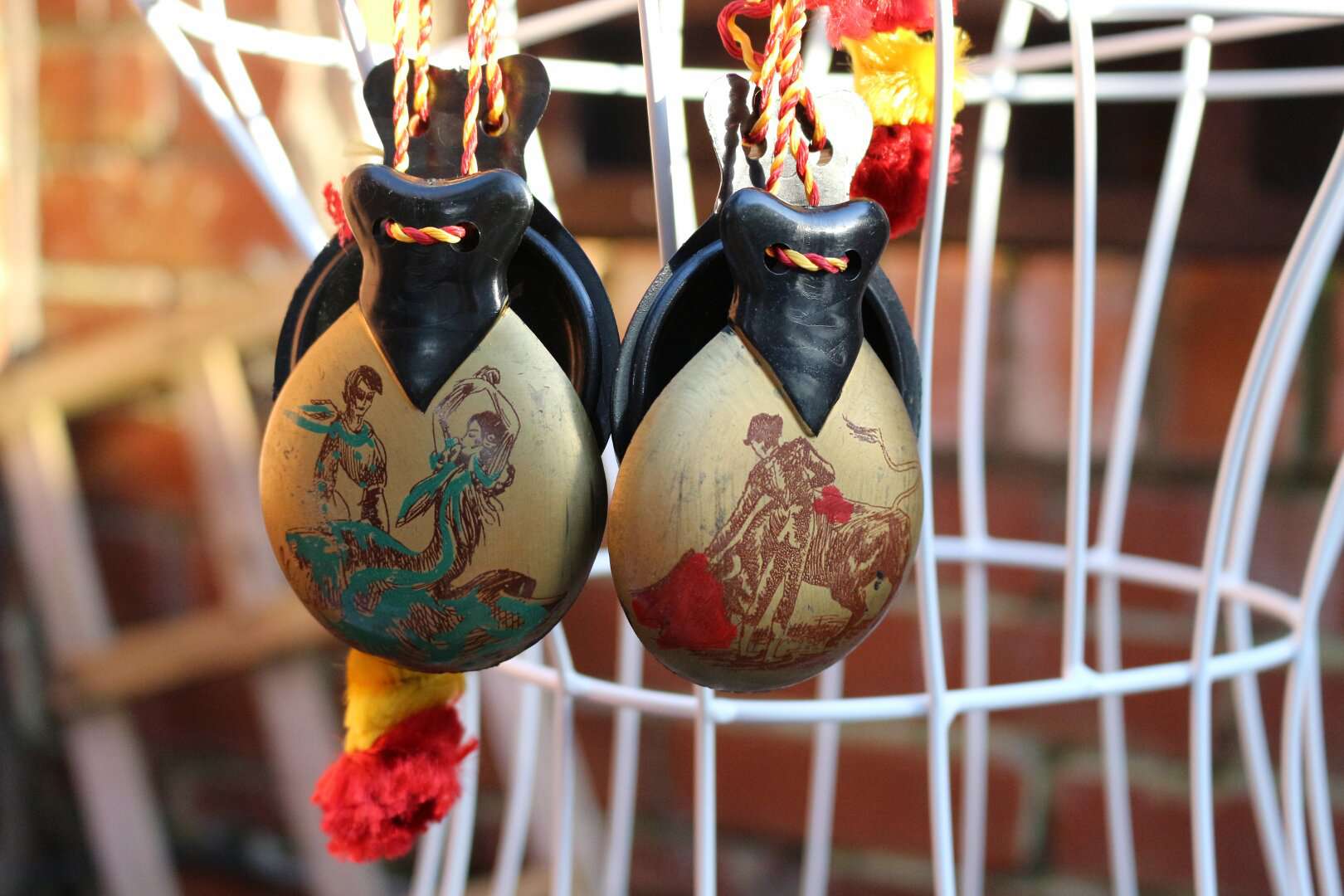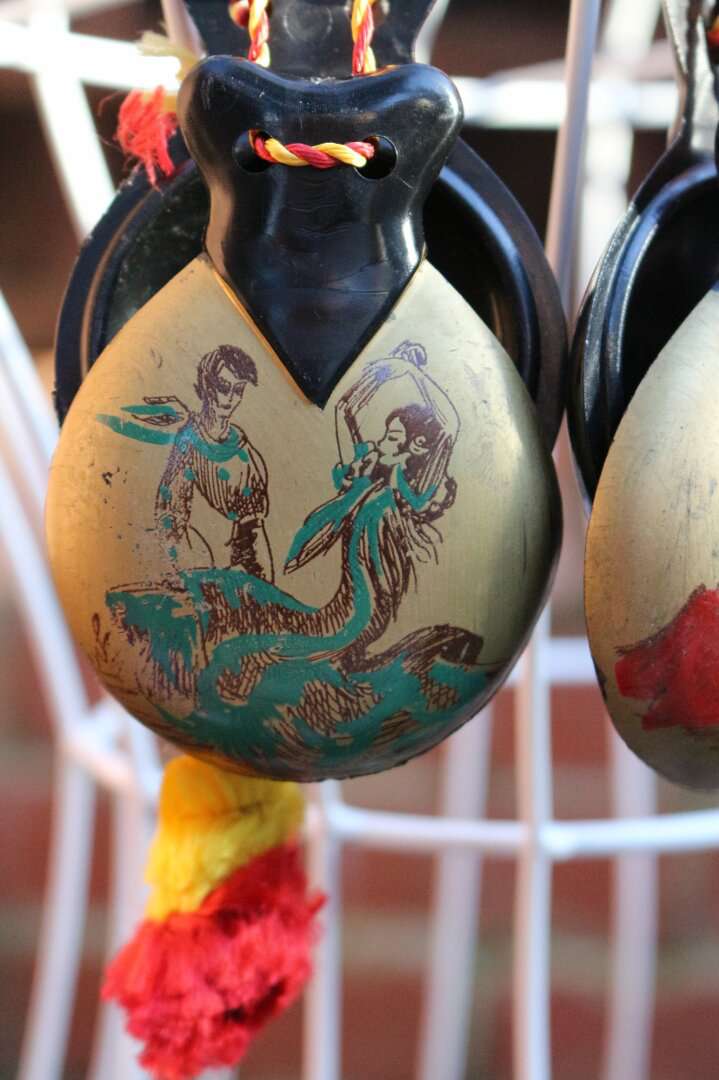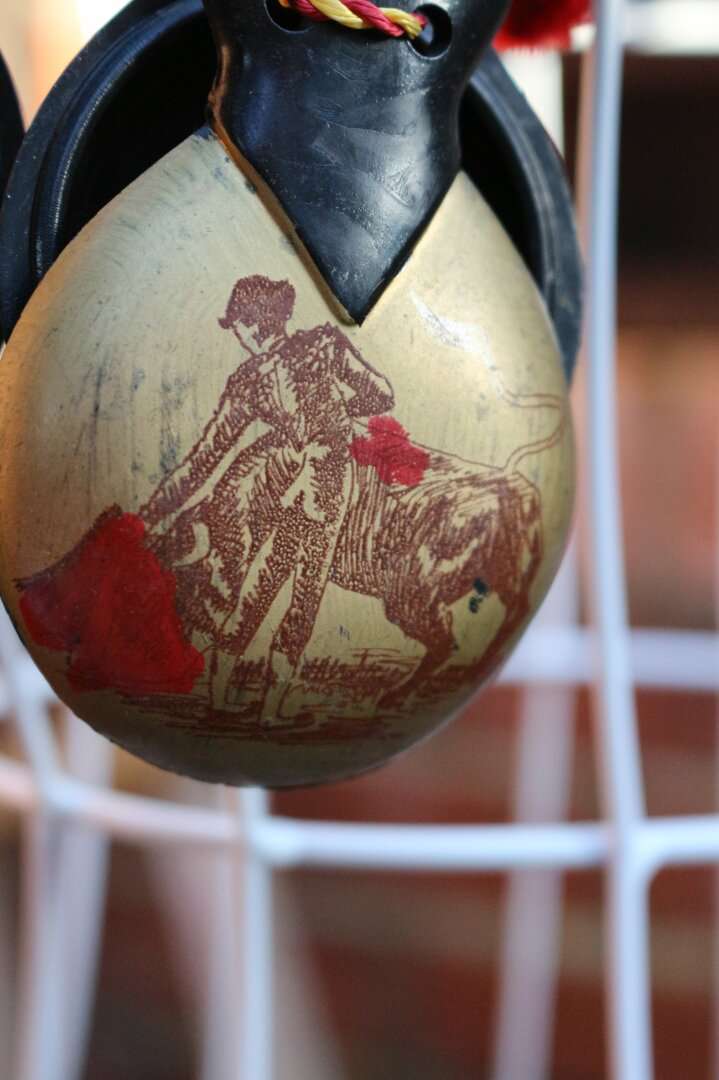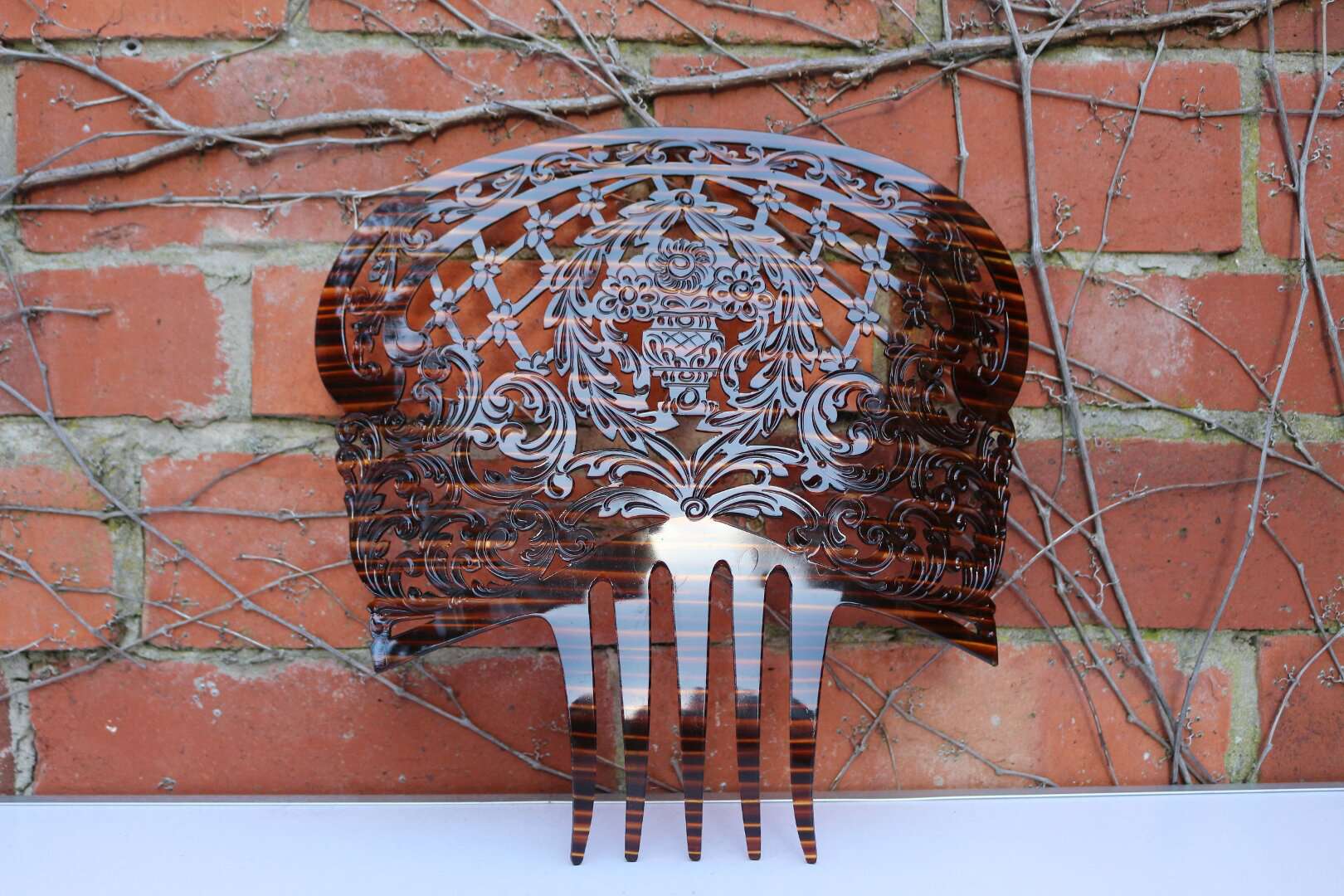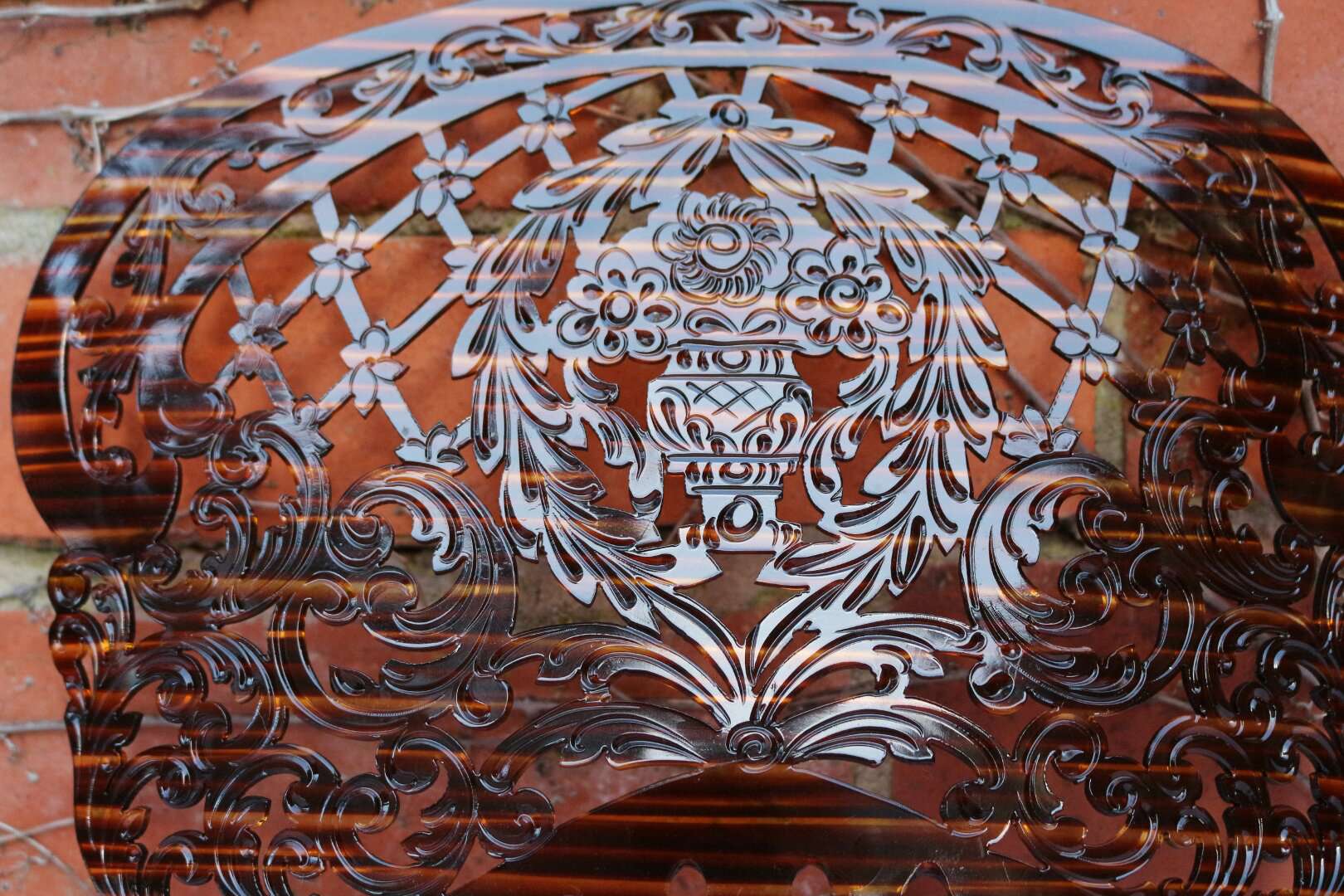Two RomArchive team members, Dr Daniel Baker and Rosamaria E. Kostic Cisneros, have contributed content to this collection. Each has provided images of various objects, including dance tambourines, Flamenco dresses, postcards and other souvenir items depicting or related to Roma women or men dancing. The majority of items in the collections concern Flamenco and Spanish Roma, so this text will aim to frame these items within this particular cultural context.
Spain: Daniel Baker and Rosamaria Cisneros Collection
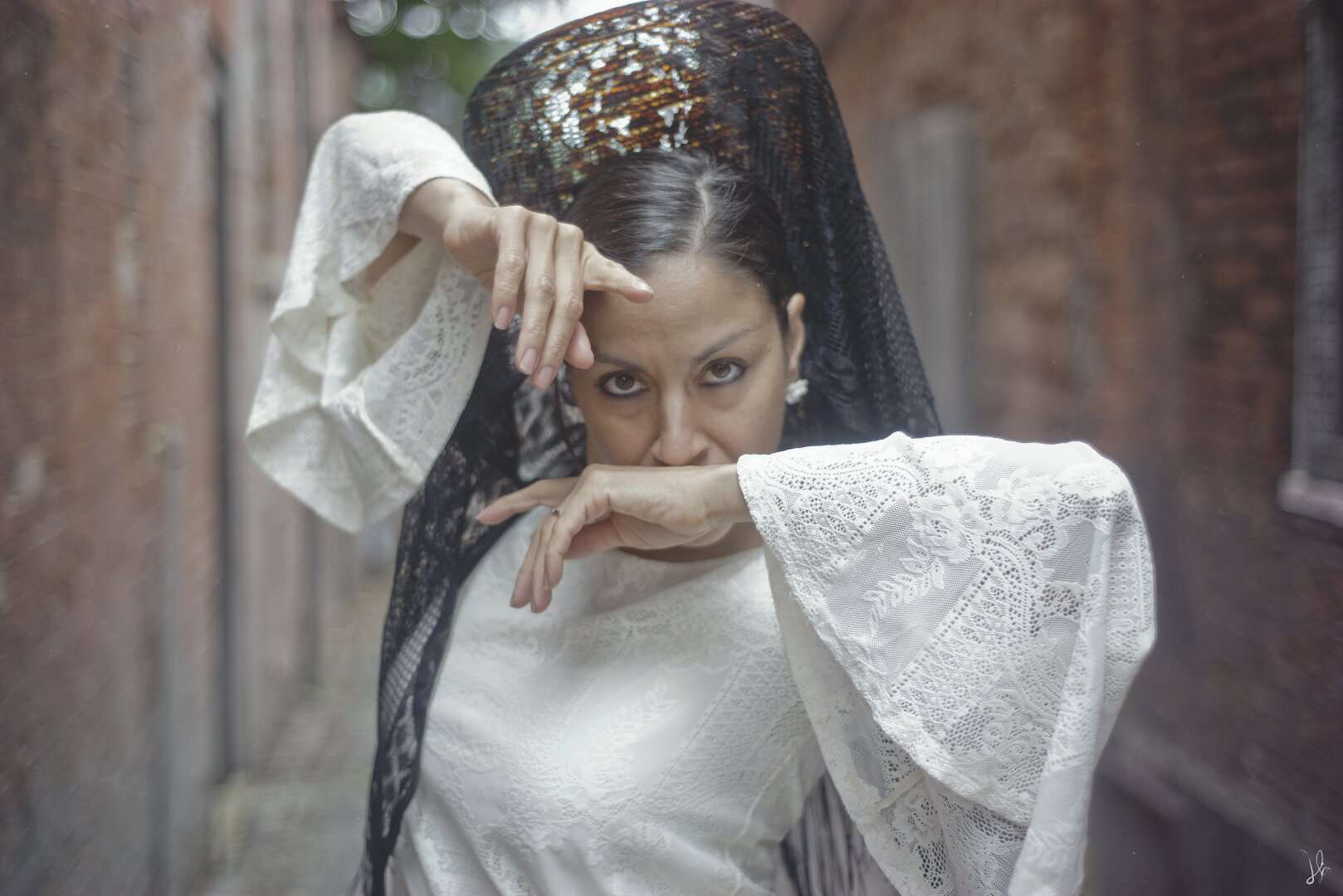

Rosamaria E. Kostic Cisneros | SAETA: The Mourning Dance shortfilm. Promotional Image #1 | photography | United Kingdom of Great Britain and Northern Ireland | 2016 | dan_00473 Rights held by: Koko Zin | Licensed by: RosaSenCis Production Company | Licensed under: CC-BY-NC-ND 4.0 International | Provided by: Rosamaria E. Kostic Cisneros – Private Archive | More at: Rosamaria Cisneros
Flamenco History
Flamenco as an art form highlights the history of the Spanish Roma community and reveals the paradox of the Andalusian region. It is a form of oral history where behaviour, gestures, poetry, dance, music and emotions all come together to document the past of a people as well as a region. Flamenco originated with the Spanish Roma and is closely linked to interaction between non-Roma and Roma. Flamenco is rooted in the everyday life of the Roma community which expresses itself in the corporeal language now known as Flamenco.
Flamenco is a Roma art form often portrayed in objects and has been the inspiration for a number of visual art exhibitions as well as dance performances.
Flamenco is often seen as a ‘traditional’ dance form but the genre is always developing. One example of an artist who has evolved with the times is the world- renowned Roma Flamenco artist Bélen Maya, who comes from a famous dancing family. She is featured in and has contributed to the Flamenco subsection of the RomArchive.
Archive Section: Flamenco

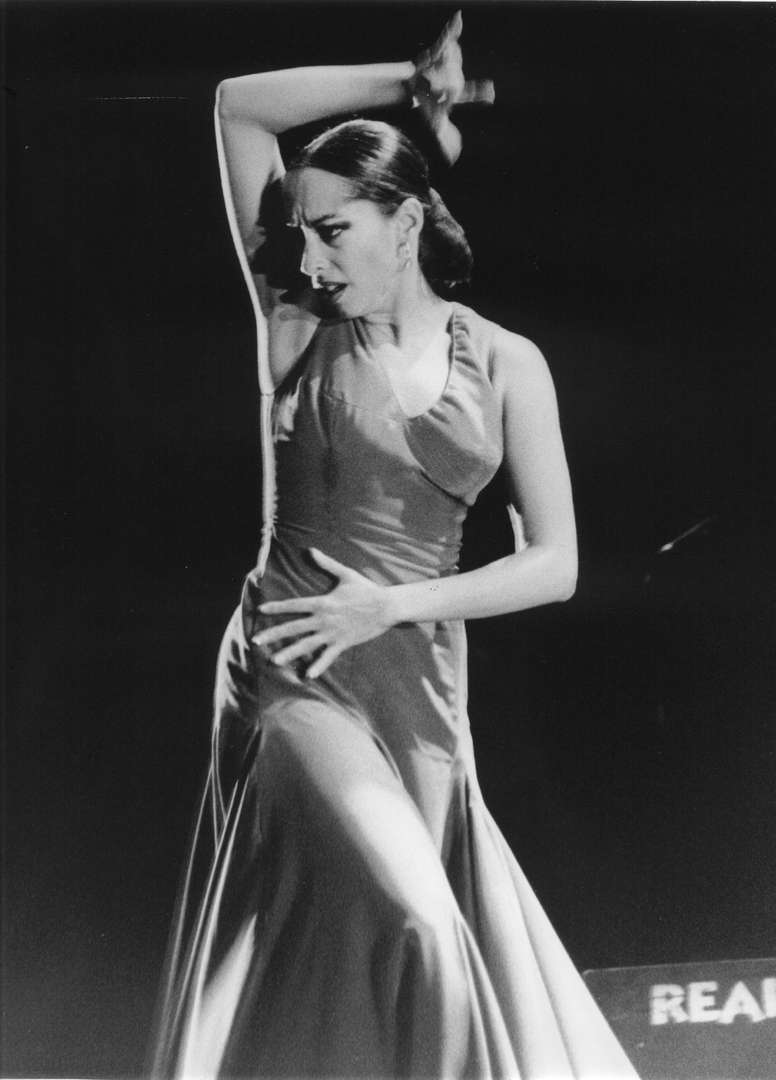
Belén Maya’s father, Mario Maya, was a pioneer in Flamenco dance. Belén Maya grew up in a Flamenco dance environment and was immersed in dance from a young age. She is a fine example of an artist who was born into a traditional Roma-Flamenco family, and who started out performing a more ‘pure’ form of Flamenco but later pushed the boundaries of this dance form and started incorporating modern elements. One of her most recent pieces, Romnia-A searing homage to Romany Women (2017) has received great praise. As critic Jonathan Stein writes,
‘This work by Belén Maya is an example of a traditional Roma Flamenco dancer who comes from a famous Roma family (Mario Maya) yet is using the contemporary vocabulary and rules of choreography to work within the Flamenco field. “Romnia-A searing homage to Romany Women” takes the viewer on a journey that honours the traditions of the Flamenco spirit and soul but transports the modern viewer to this new place.’ (Stein, 2017)
The image that is often associated with Flamenco is that of Carmen, the fiery and passionate ‘Gypsy’ woman who seduces the man in Prosper Mérimée’s novella and Georges Bizet’s opera of the same name. Maya’s work depicts Roma women in a more realistic light, offering counter-narratives to the traditional image of Flamenco.
The Carmen Stereotype
The Carmen figure has become a stereotype of Flamenco and we see this figure depicted on many objects linked with the art form and with Romani women.
‘The stereotypical image of a “Gypsy” woman may be quite similar to the image on which Mérimée based his novella Carmen in the 1860s. Mérimée ’s story was about a Spanish soldier who was seduced by a ‘fiery Gypsy’ woman named Carmen. Soon after, the French composer Bizet wrote an opera based on the novella and presented it to a French audience in 1875.’ (Leicester, 1994)
This image of the ‘Gypsy’ woman features in the works of many great composers and writers through the ages, thus reproducing a false image of the Roma female body and dancer.
While the association of Flamenco and Roma women with a Carmen figure may seem rather harmless, it actually reflects a deeply rooted misinformed and romanticised image of the community. The tendency of many people to associate Flamenco with Carmen is not only highly sexualized but distorted and dangerous. Flamenco consists of singing, guitar playing and dancing, yet the typical focus is usually on the female flamenco dancer with her frilly dresses, long black hair and ‘seductive’ dancing.
This background information serves to contextualise the collection of Dr Daniel Baker. The material he has offered to the Archive is not work he has made himself but rather a series of still images from his collection that include objects that capture Flamenco dancers and or elements of the Roma community.
Dr Daniel Baker is an artist, curator and art theorist. A Romani Gypsy born in Kent, he holds a PhD in Roma aesthetics from the Royal College …
Dr Daniel Baker
Dr Daniel Baker is an artist, curator and theorist. A Romani Gypsy born in Kent, UK, he holds a PhD in ‘Gypsy’ aesthetics from the Royal College of Art, London. Baker acted as an exhibitor and advisor to the first and second Roma Pavilions ‘Paradise Lost’ (2007) at the 52nd and ‘Call the Witness’ (2011) and 54th Venice Biennales. Baker’s practice examines the role of art in the enactment of social agency. His publications include We Roma: A Critical Reader in Contemporary Art (2013) and Ex Libris (2009). Baker’s work is exhibited internationally and can be found in collections across Europe, America, and Asia. Former Chair of the Gypsy Council (2006–2009), Baker currently lives and works in London.
The Tambourine
The tambourine is one of the oldest musical instruments known. According to Hargrove,
‘they were used in ancient Egypt and even mentioned in the Bible ... The tambourine entered Spain with the Moors. Its name is derived from a Persian word meaning “circle”’. (Hargrove, 2013)
It is often used as a percussion instrument and has a metal frame with inset metal disks that are loosely positioned to sound when moved. The player holds it in one hand and shakes or taps it with the other.
Baker’s collection includes several items that could be classified as tambourines, made of various materials. Three of the tambourines have an image on the circular surface, depicting a Flamenco scene and capturing a stereotype of a Roma dancer.
The first tambourine in the collection is made of wood with an animal skin membrane. The surface of the instrument is painted with a portrait of a female who is presumably a Romani dancer.
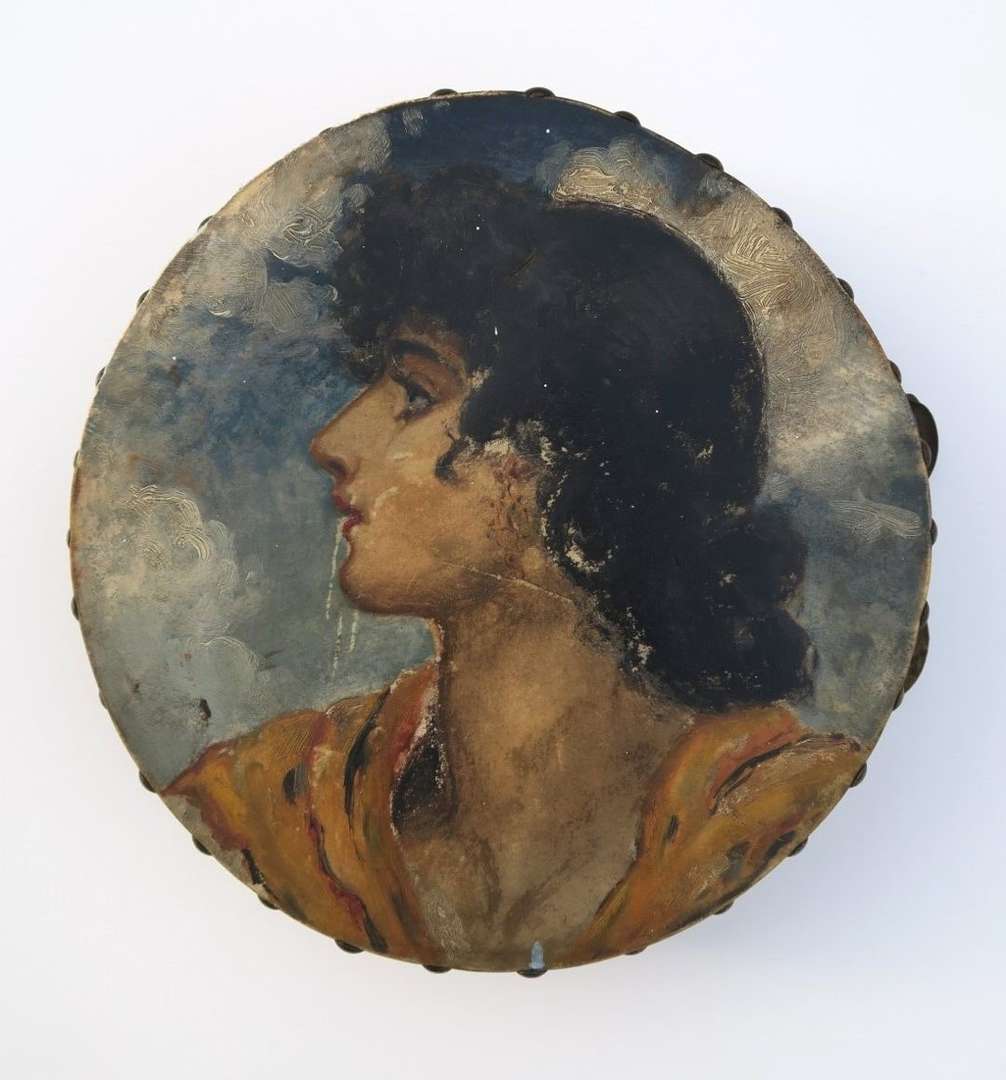
London, UK (2017) Hand-painted tambourine.
Rights held by: Dr. Daniel Baker (photo) | Licensed by: Dr. Daniel Baker (photo) | Licensed under: CC-BY-NC-ND 4.0 International | Provided by: Isaac Blake – Private ArchiveBaker writes that
‘the surface is distressed through age but nevertheless shows a charmingly characterful portrayal of woman with skyscape in the background. One pair of brass cymbals remain intact with the two other pairs missing.’ (Baker 2018)
The second tambourine is a tin-plate Chad Valley children’s toy tambourine dating to the late 1960s. The front of the tambourine shows a printed image of a female Romani dancer wearing a dress with a red bodice with a white neckline and a yellow skirt with black shoes and a blue shawl. A wooden caravan can be seen in the wooded background. More Romani are shown dancing round a camp fire burning in front of the caravan. Coloured ribbons mirror those attached to the tambourine held by the dancer in the printed image. Red, yellow and black diamond patterning adorns the side of the instrument. Small distressed gilded cymbals are inserted into the slots in the side of the instrument.
The third circular tambourine dates from around the 1950s or 1960s. It has a graphically stylised scene of Flamenco dancers on the front and a series of similar illustrations of dancers and musicians around the rim. There are three pairs of cymbals made of gilded metal around the perimeter. These show signs of age as the gilding is a little rubbed.
These three tambourines depict a Romani woman in the same way as on the items that may be classified as souvenirs. These types of visual representations serve as the backdrop for several stereotypical images circulating around the general public.
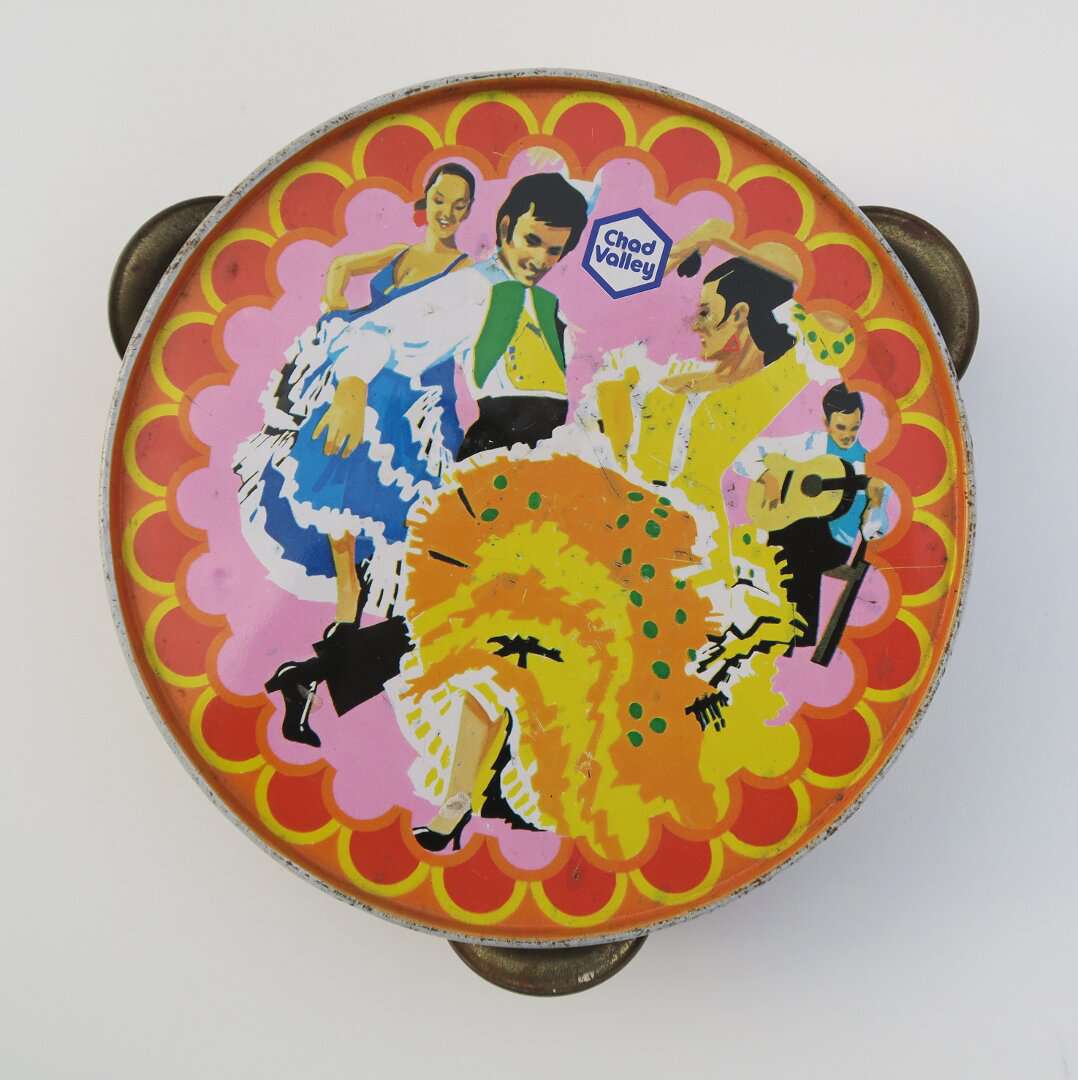
London, UK (2017) Tinplate Flamenco tambourine.
Rights held by: Dr. Daniel Baker (photo) | Licensed by: Dr. Daniel Baker (photo) | Licensed under: CC-BY-NC-ND 4.0 International | Provided by: Isaac Blake – Private ArchiveSouvenirs
Tourists do not necessarily travel with the intention of shopping, but many individuals do purchase items from local stores while on holiday. The objects purchased can range in size, colour, function and place and date of origin. The tourist market is a lucrative one worldwide and often objects are decorated with images so that the consumer identifies them with the place he or she is visiting. Dong and Siu (2013) define such purchase behaviour as ‘experience intensification’: that is, visitors purchase souvenirs and gifts to make their travel experience more tangible. In fact, many tourists feel that a trip is not complete if they have not purchased souvenirs (Swanson & Horridge, 2006). Souvenirs are vital for the tourism economy (Griggio, 2015), while selling and buying of souvenirs are routine activities at tourism destinations (Swanson & Timothy, 2012).
Recently, new research has been conducted on souvenirs that explores
‘the tourist’s perspective, which is that souvenirs are tangible objects or intangible experiences that are symbolic reminders of an event or experience. The other conception concerns the supplier’s perspective, which is that souvenirs are tourism commodities that can be found in souvenir shops and handicraft markets.’ (Sthapit & Bjork 2017)
Souvenirs are tangible objects that may be associated with memory and experiences. Souvenir shopping can be a habitual activity for many holiday-makers and souvenirs concretise and preserve tourists’ memories of a trip (Gordon, 1986). While souvenir shopping can be viewed as a plus for the economy as a whole and for local businesses, the negative side is that souvenirs often project stereotypical images.
What Baker’s collection illustrates is the way the Flamenco dancer and the Romani woman are portrayed on souvenirs and objects that are often used as decorations. These images are then reproduced, consumed and assumed to be genuine reflections of Romani life, which is a dangerous distortion. While these tambourines are primarily from the 1950s and 1960s, reproducing such stereotypes is still common practice today. We see this with smaller dolls that are sometimes called Senorita dolls which likewise reflect this fascination with the Roma image and the body of the Flamenco dancer.
Dolls
Dr Daniel Baker states that the Marin Chiclana dolls were originally designed by Don José Marín Verdugo in the 1920s. Earlier dolls were made from ceramic but many that can be purchased today are plastic. The plastic collectible dolls seen here were at their height during the 1960s and 1970s. The dolls have smiling faces with sideways glances. Each has detailed accessories that can include jewellery, guitars, castanets, traditional hair combs (peinetas) and lace mantillas. Until 2014 there was a Marin Dolls Museum next to the factory located in the province of Cadiz, Spain. This was a major tourist attraction for the region and a significant factor in the Andalusian economy.
These dolls are highly significant for the discussion regarding the commercialisation and globalisation of Roma dancing, in this case, Flamenco dance. As artefacts they demonstrate the appropriation of Roma culture and the body of the female Flamenco dancer that has taken place over the years. There are several types of dolls which can be purchased at either high-end or low-end outlets and these dolls represent the market that exists. As Hargrove states,
‘by 1829, the Flamenco dress became popular in high society. It eventually became the national costume of Spain and is still worn to Seville’s April Festival as well as other special occasions’ (Hargrove, 2013).
The April Festival that Hargrove refers to is directly linked to the Sevillanas dance.
Sevillanas and Postcards
Sevillanas were originally a folk dance from southern Spain. The dance is not considered to be Flamenco but the dances styles do share a lot of the same movements, particularly of the hands and arms. While there is little to no footwork in the Sevillanas, there is a bit of foot stomping in the third verse of the dance. A complete Sevillanas is composed of a set of four individual dances set to music in quarter time. The music always includes a guitar and the dance is typically danced by a couple. The dancers gracefully pass one another in a series of turns but never actually touch.
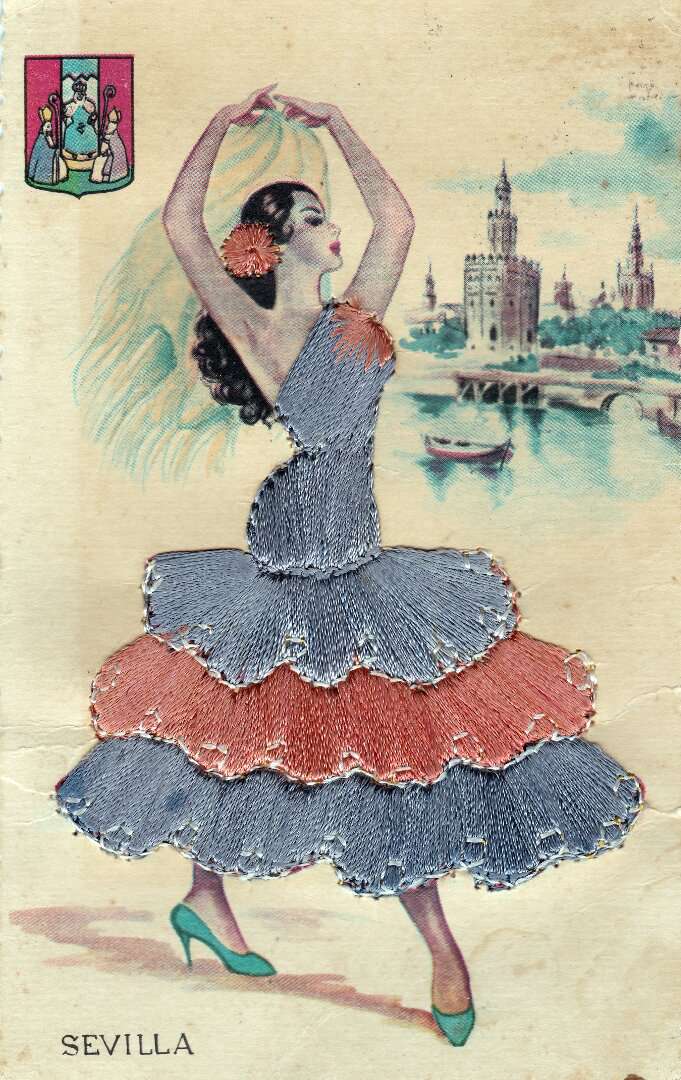
London, UK (2017) Flamenco postcard from Seville, postcard: Spain, Seville Flamenco dancer, embroidered card: posted 1960.
Rights held by: Dr. Daniel Baker (photo) | Licensed by: Dr. Daniel Baker (photo) | Licensed under: CC-BY-NC-ND 4.0 International | Provided by: Dr. Daniel Baker – Private ArchiveFeria de Abril is a week-long festival in Seville, which is extremely popular and attracts not only local visitors but also people from other parts of Spain and from abroad. At the Feria de Abril the Sevillanas dance is still performed by couples and groups from all walks of life. During the Fair the majority of those attending dance the Sevillanas, whether they are dancers or not. The city is often associated with Flamenco and the Feria de Abril and the Flamenco dancer as depicted in this postcard is used on its souvenirs.
The Sevillanas dancers also wear traditional dresses and costumes that are often seen during the festival. The tradition of wearing special outfits to the Spanish Fair is still honoured today. Flamenco dancer and historian Rosamaria E. Cisneros has photographed a series of Flamenco and Sevillanas dresses. Her collection includes a number of colourful dresses that range in age and size.
Cisneros is a dance historian and critic, Romani scholar, flamenco historian and peace activist. She graduated from the University of Wisconsin-Madison …
Rosamaria E. Kostic Cisneros
Rosamaria E. Kostic Cisneros (www.rosasencis.org) is an artist, dancer, choreographer, dance historian and curator. Cisneros has lived and danced in various parts of the world and collaborated with many Flamenco greats and other leading figures in the field of dance. She has taught throughout Europe and the US and is a dance writer. She is involved in various EU-funded projects which aim to make education accessible to vulnerable groups and ethnic minorities and she sits on the Boards of several Roma and dance organisations. In 2018, she is a member of staff at Coventry University’s Centre for Dance Research (external link: C-DaRE) based in the UK while also a curator of the RomArchive Dance section.
She is inspired by interdisciplinary work and collaborative projects and modes of working. The combination of the practical and the theoretical underpins all of her research interests and she is guided by bringing people together. Working with vulnerable groups and using the arts and education to engage communities and participate in projects that lead to a more inclusive society forms the basis for her academic research. Cultural heritage and digital technologies are also a key part of her current practice.
Her work with C-DaRE allows her to continue to dance and create work that includes choreographing and directing short dance films and also photographing a series of Flamenco dresses and accessories. Cisneros has offered RomArchive more than eighty images that capture both traditional and modern Flamenco dresses from a number of designers and dressmakers. She has also made a film about the Flamenco dress-maker Adela Olmos. The final part of her collection is a series of dance shorts that mix traditional Flamenco dance vocabulary with modern choreographic language.
Flamenco Dresses
Flamenco dresses are often associated with the Flamenco dancing body and in recent years have become a focus and even an attraction. The commercialisation of Flamenco is not a new phenomenon but the dress is often seen and photographed on stage.
The Flamenco dress is very similar to the outfits worn by Roma women in the early 1800s. During this period the Roma woman wore a simple dress with two or three flounces. This style and silhouette was later modified by Flamenco dancers of the period who sewed on additional flounces and changed the neckline and even added a train to the back. Such dresses are rarely photographed without the female figure inside them. Cisneros has captured the colourful dresses and photographed the details, zooming in on the hems and seams.
Cisneros also photographed Flamenco dance accessories that have become part of the dance repertoire. Her collection includes Flamenco earrings and pins but also castanets. Although this instrument is often associated with Flamenco, it was actually primarily used in folk dances. It has become a Flamenco dance accessory largely because of the use of the castanet as a ‘gimmick’ that is attractive to spectators. How castanets became part of Flamenco is a complex story which we will not delve into here. What is important to note is that the tourist industry also uses the instrument to help sell a national image of Spain in which bullfighting and Flamenco dancing feature prominently. Below are images of a set of professional castanets and a tourist pair that showcase stereotypical images.
Flamenco Dress Documentary
Behind the Flamenco Dress: An Interview with Adela Olmos (Cisneros, UK, 2015) is a medium-length documentary film that shows Flamenco culture through the words and work of Flamenco dressmaker Adela Olmos. Rosamaria E. Kostic Cisneros talks with the designer in her little studio, about what Flamenco is, its importance and relevance in today’s society and how it is embodied in the Flamenco dress. The film captures Olmos’ trajectory as a non-Spaniard working in the Spanish Flamenco world and her own process of creating and making Flamenco dresses. She describes what it is like to work in Jerez, Spain, and in London, and looking back at her time in the field, she recalls hearing the late Paco de Lucía play live.
The documentary was directed and edited by Cisneros and went on to win a prize as best documentary from the UK in the International Euro Film Festival 2016 Summer Edition. The film features music by Paco de Lucía and is a moving documentary that brings the colourful world of Flamenco dresses to a wider audience.
External link: Behind the dress: an interview with Adela Olmos

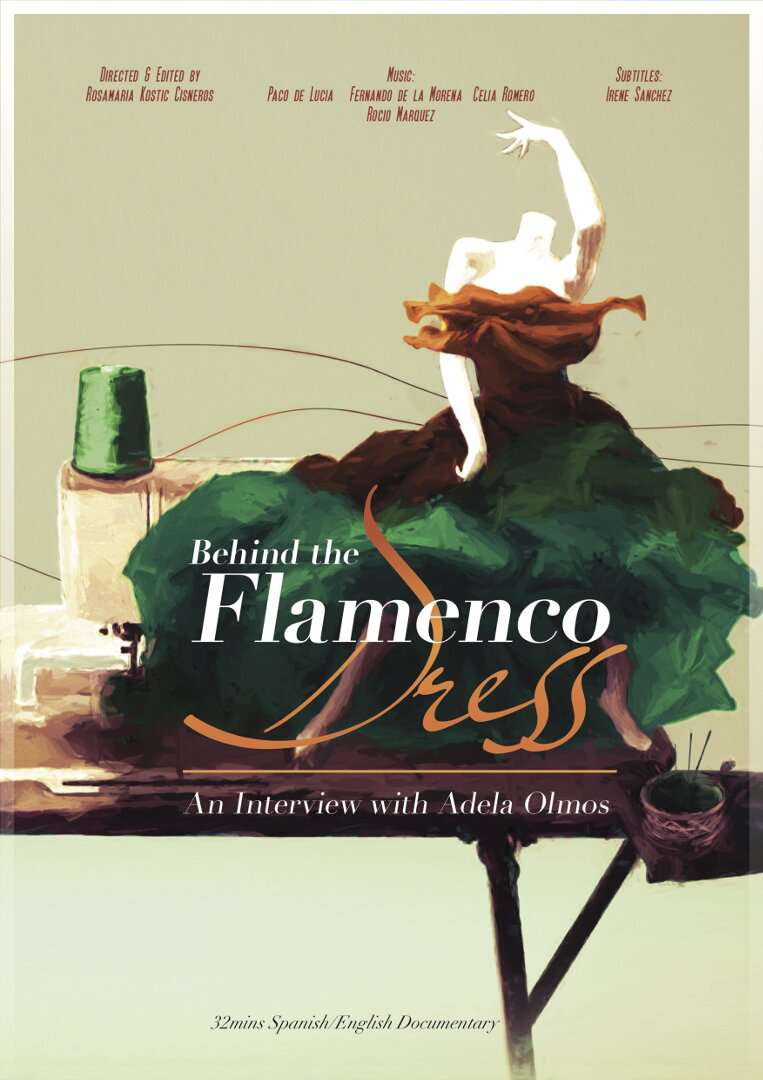
London, UK (2014) Official poster for documentary Behind the Flamenco Dress: an Interview with Adela Olmos. Promotional image.
Designed by: David Ajiri for Pixel Shark Studios | Licensed by: RosaSenCis Production Company | Licensed under: CC-BY-NC-ND 4.0 International | Provided by: Rosamaria E. Kostic Cisneros – Private Archive | More at: Rosamaria Cisneros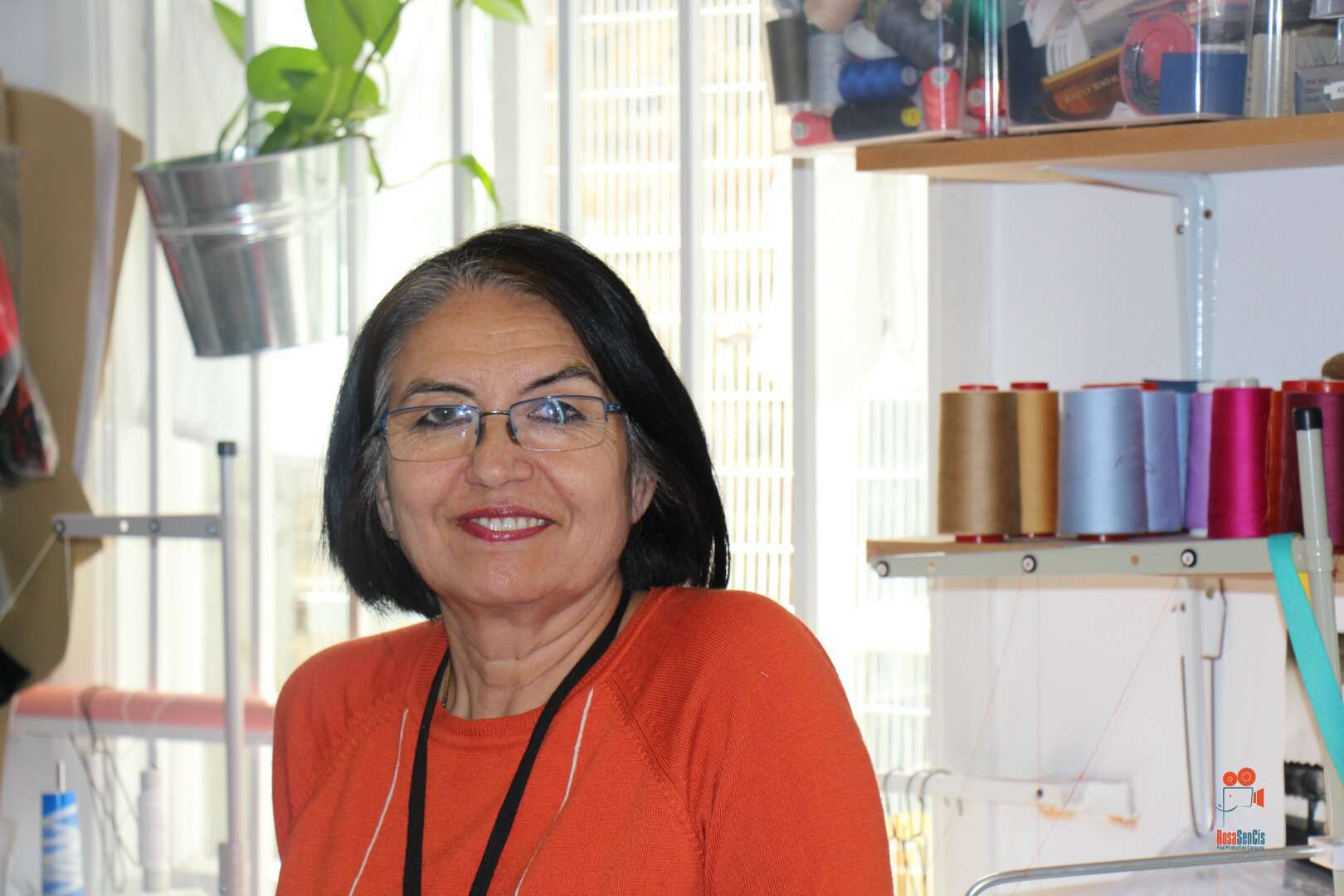
London, UK (2014) Official promotional image for documentary Behind the Flamenco Dress: an Interview with Adela Olmos.
Rights held by: Rosamaria E. Kostic Cisneros | Licensed by: RosaSenCis Production Company | Licensed under: CC-BY-NC-ND 4.0 International | Provided by: Rosamaria E. Kostic Cisneros – Private Archive | More at: Rosamaria CisnerosSaetas, Mantillas and Peinetas
Holy Week: Easter week is made up of a series of symbolic and ritual images that have been constructed over the years. During Holy Week in Spain, and more specifically in Andalusia, one is sure to see a procession featuring a statue or a religious scene on a float carried through the city by between ten and thirty Nazarenos. Parallel to the physically tangible examples of devotion during Holy Week, there are also more intangible performances that are significant in the seven-day cultural event.
The Saeta, which is a traditional religious song that resembles Flamenco, is a form of prayer or devotion traditionally sung unaccompanied, stemming from the Jewish religious song believed to date back to the sixteenth century. Typically, the Saetero has a strong, powerful, highly emotional voice and begins his/her song as the float comes to a halt.
Alongside the processions and the Saeta, one is also sure to see the Spanish veil known as the mantilla. The lightweight ornamental mantilla came into use in the warmer regions of Spain towards the end of the sixteenth century. Those made of lace became popular with women in the seventeenth and eighteenth centuries and are depicted in portraits by Diego Velázquez and Francisco de Goya. In the nineteenth century, Queen Isabella II actively encouraged its use. The practice diminished after her abdication in 1870, and by 1900 the use of the mantilla had become largely limited to formal occasions such as bullfights, Holy Week and weddings.
Some sources say mantillas were originally worn by women from Andalusia, possibly influenced by Muslim women from nearby North Africa. As Spaniards settled in Mexico and South and Central America, they brought their traditional cultural custom of wearing the mantilla to Latin America.
A peineta, similar in appearance to a large comb, is used to hold up a mantilla. This ornamental comb, usually tortoiseshell in colour, originated in the nineteenth century. It consists of a convex body and a series of prongs and is often used in conjunction with the mantilla. It adds an illusion of extra height to the wearer and also holds the hair in place during weddings, processions and dances. It is a standard element of some regional costumes of Valencia and Andalusia.
‘The Mantilla comb is a large upright comb which is placed in the hair and is draped by a mantilla. Its Spanish name is peineta and originated in the region of Andalusia just as our Flamenco dress did’ (Hargrove, 2013).
In the dance short SAETA: The Mourning (Cisneros, UK, 2016), a six-minute dance film, dancer and artist Rosamaria E. Kostic Cisneros focuses on the peineta and mantilla. Cisneros works closely with the videographer and editors to honour traditional aspects of the peineta, Saeta and mantilla and set them in a contemporary context.

Coventry, UK (2016) Rosamaria Cisneros dancing in SAETA: The Mourning Dance short film. Promotional Image.
Rights held by: Koko Zin | Licensed by: RosaSenCis Production Company | Licensed under: CC-BY-NC-ND 4.0 International | Provided by: Rosamaria E. Kostic Cisneros – Private Archive | More at: Rosamaria CisnerosExternal link: SAETA-The mourning, Dance short film

The dance short takes the traditional religious song, the Saeta, sung during Spain's Holy Week and brings it into a modern setting. The song is heard typically during the Good Friday procession and is usually associated with death. The Flamenco movement vocabulary explores grief and longing and the film plays with this concept. Black is usually associated with mourning and the Spanish comb, the peineta, is important to the Saeta song and to Holy Week.
In the film the peineta is juxtaposed with a modern outfit and plays with the ideas of new ways of seeing and old ways of being. The costumes and dances shown in the film expand traditional boundaries, and Koko Zin’s camera work frames the movement and intensifies the feeling of anxiety that the choreography plays with. David Ajiri’s editing is crisp and makes SAETA: The Mourning an eerie and haunting dance film. The film has been screened at several international film festivals and has won awards.
Rights held by: Rosamaria E. Kostic Cisneros | Licensed by: Rosamaria E. Kostic Cisneros | Licensed under: CC-BY-NC 3.0 Germany | Provided by: RomArchive






